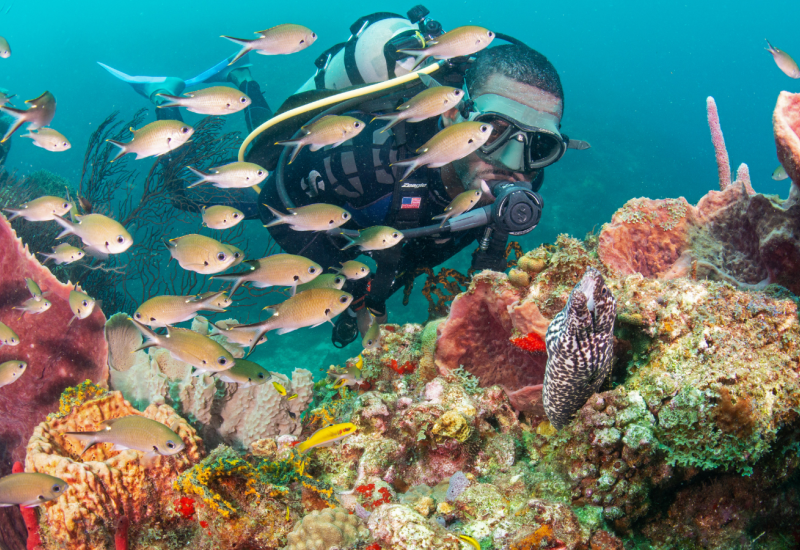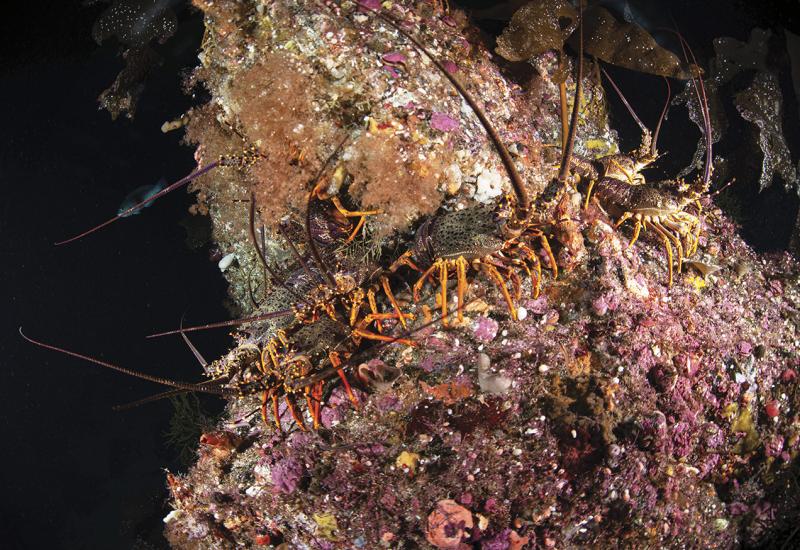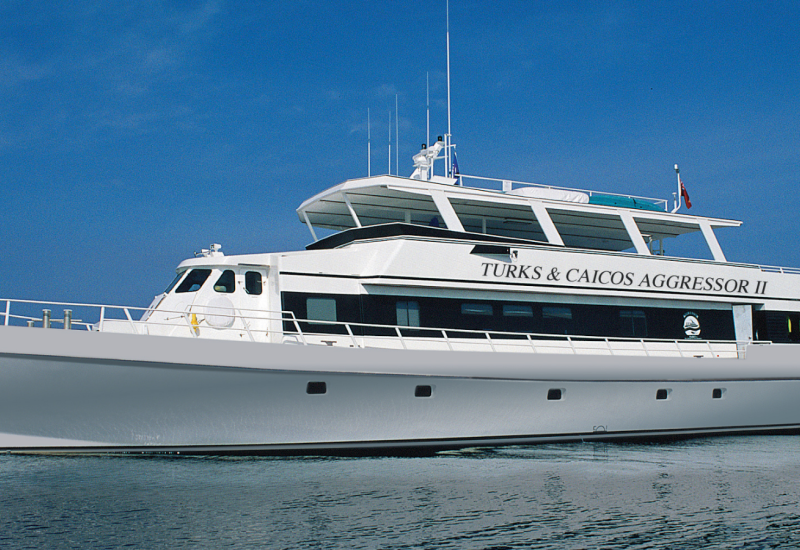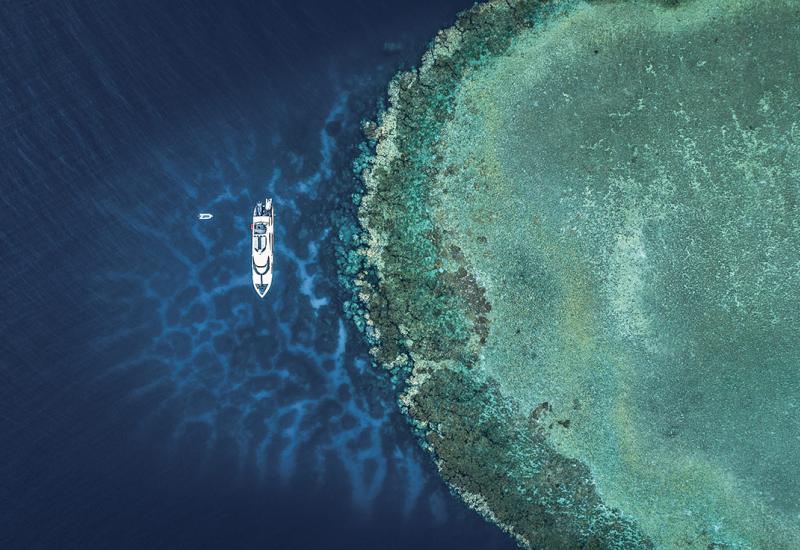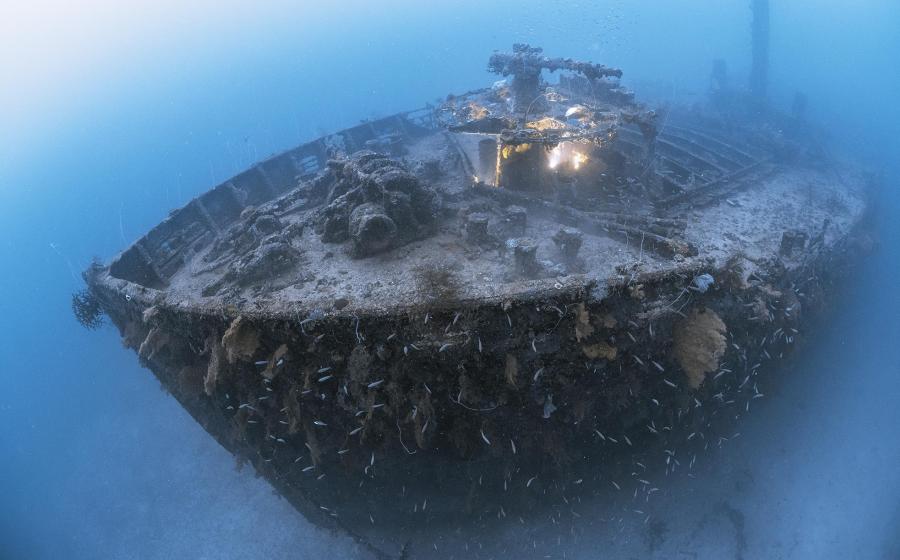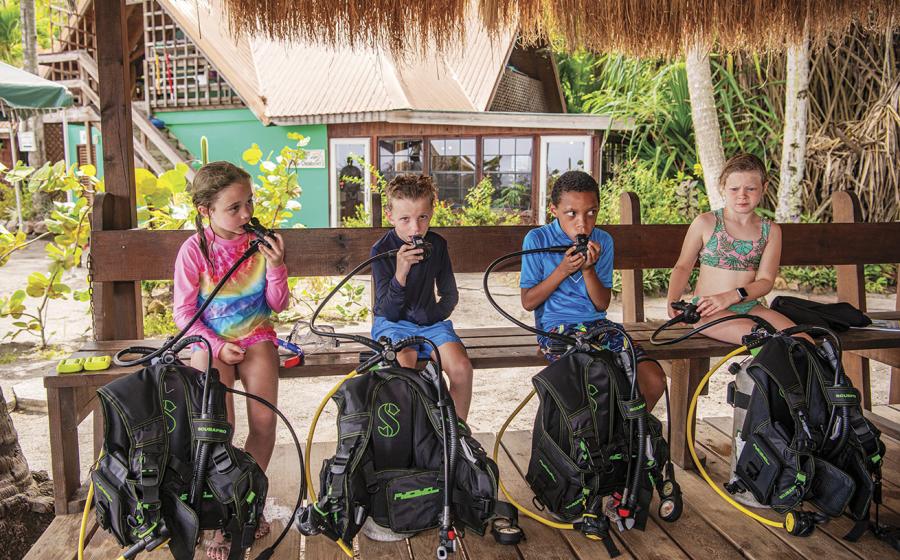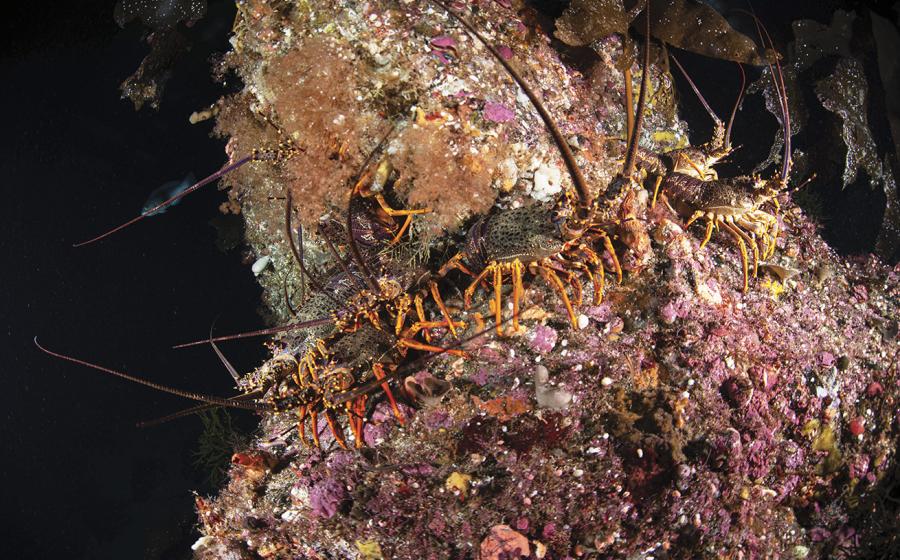Dive Travel Guide: 38 Places to Dive in 2025
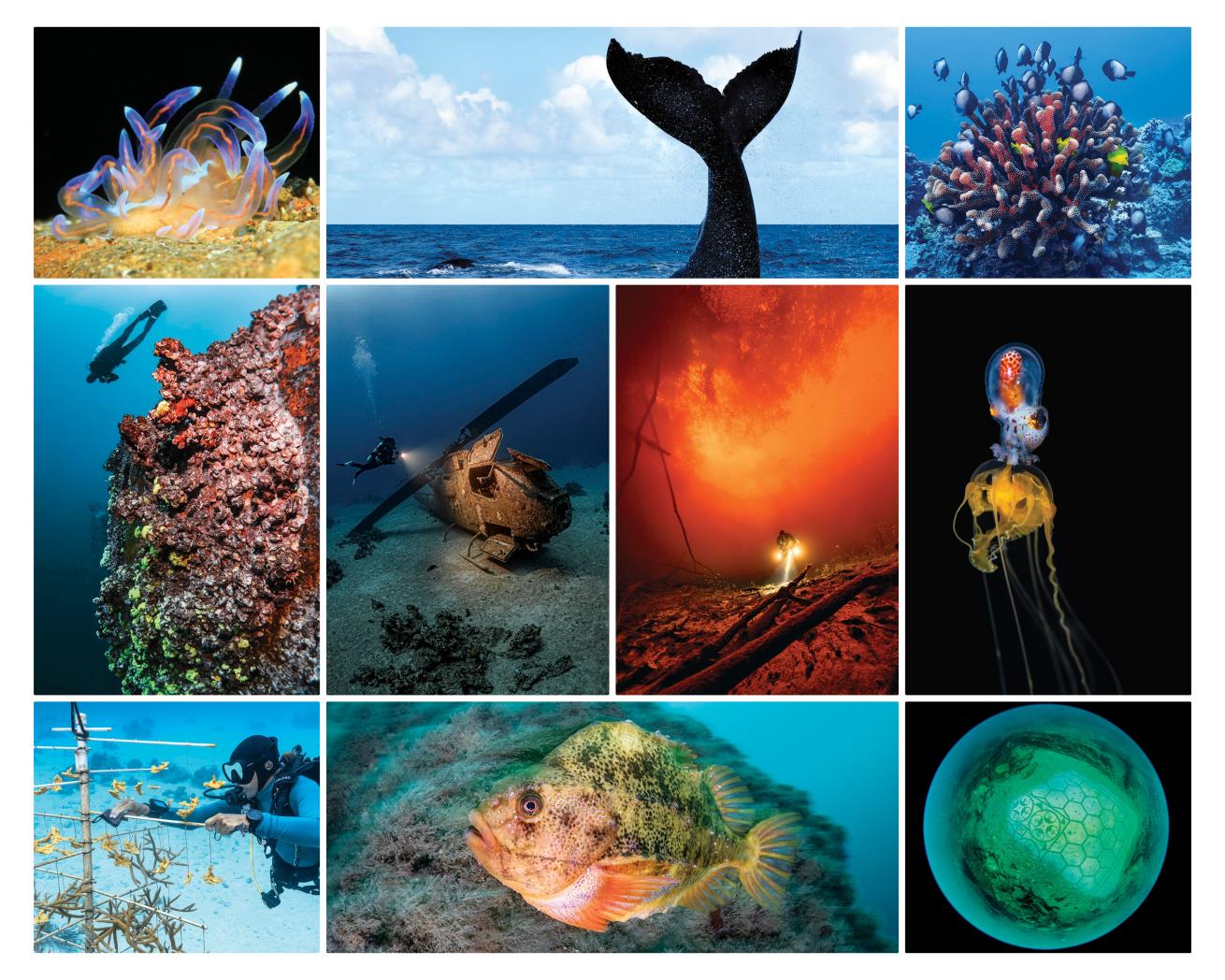
Top: Brandi Mueller; Arturo Telle; Steve Jones; Middle: Tobias Friedrich; Franco Banfi; Candice Landau; Jennifer Penner; Bottom: Alex Dawson; Arturo Telle; Candice LandauThe wide wonders of the underwater world beckon divers with amazing animal behaviors, haunting wrecks, ways to give back and more.
It’s the beginning of a new year, a time to take stock of where you are and—more important—where you’re going next. For divers, this means planning that next big trip. Whether you’re a seasoned traveler or have yet to venture outside your local training grounds, our special Dive Travel Guide is sure to stoke your wanderlust and give you the confidence to make your dive dreams reality this year.
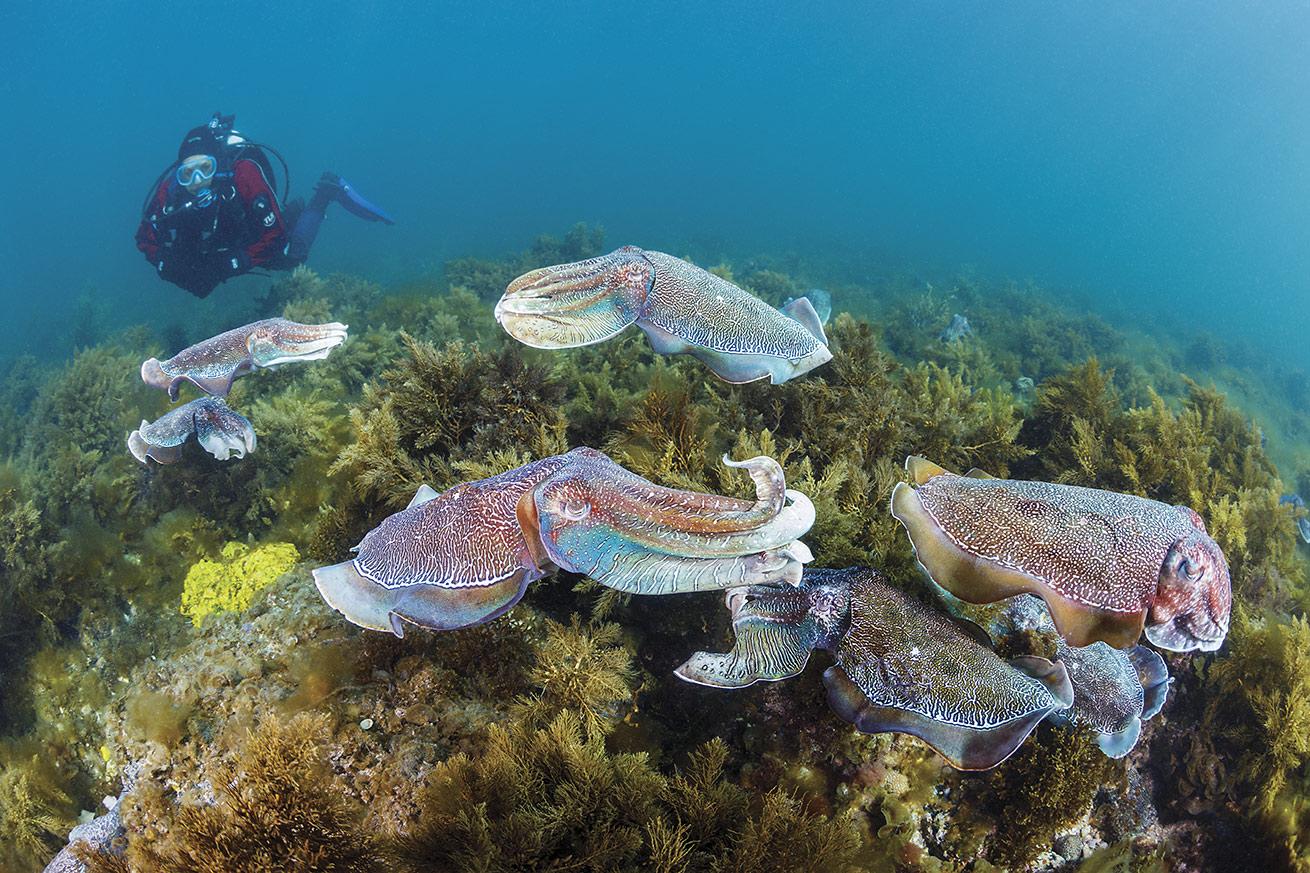
Brandon ColeGiant Australian cuttlefish aggregate in the shallows of Whyalla. The species can grow up to 3 feet long.
1. Australia
Experience an Unparalleled Giant Cuttlefish Aggregation
Don’t let the factories and mines put you off—Whyalla, South Australia, is home to an extraordinary dive experience. Each winter, the beautiful blue coastal waters fill with tens of thousands of giant Australian cuttlefish, converging for their annual spawning event. From May to August, these highly intelligent cephalopods engage in the most intricate courtship rituals, showing off their ability to change color and pattern. Nearby sites like Stony Point are also very shallow—about 10 to 15 feet deep, making the encounter very accessible. —CANDICE LANDAU
Operator: Diving Adelaide (divingadelaide.com.au)
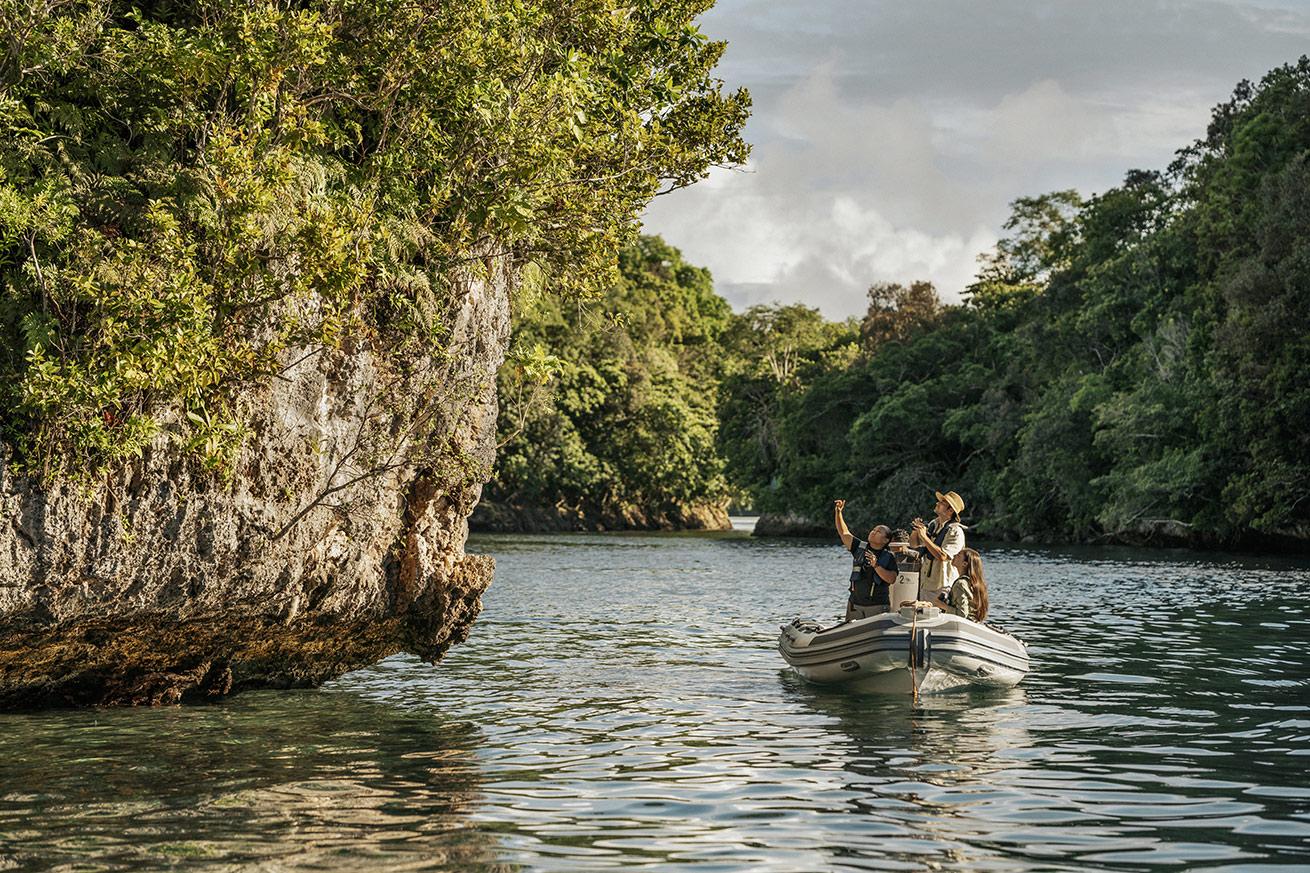
Courtesy Four Seasons ExplorerGuests scout winged wildlife topside.
2. Palau
Connect With Nature Above and Below
Connecting the topside beauty of Palau with the destination’s world-famous reefs and walls for diving comes naturally when you make the luxurious Four Seasons Explorer your floating base. A typical morning might start with bird-watching aboard the liveaboard’s tender with a Palauan naturalist, scouting for species such as Palau fruit doves and Micronesian starlings in the lush Rock Islands. Then it’s off to dive with other winged things—think manta rays at German Channel or eagle rays at Blue Corner—later in the day. —TERRY WARD
Operator: Four Seasons Explorer (fourseasons.com)
Related Reading: Palau's Enduring Dive Appeal
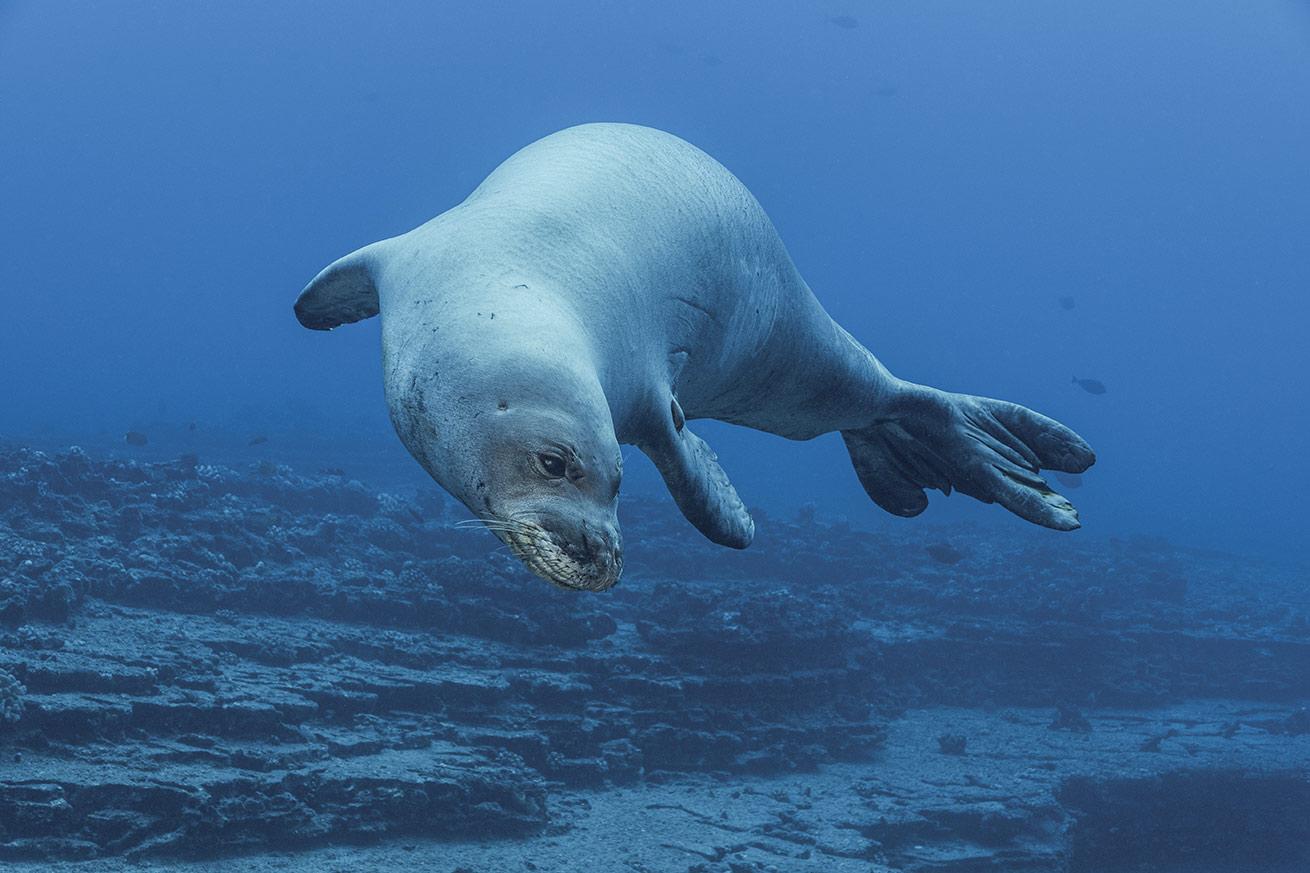
Brandon ColeThe endangered Hawaiian monk seal enchants visitors who come to dive Ni’ihau.
3. Hawaii
Get Mask to Whiskers with Monk Seals
From atop the cliffs along Kauai’s Nāpali Coast, the “Forbidden Isle” of Ni’ihau is visible on a clear day. Though going ashore is prohibited, diving is allowed, and there’s no better place to say aloha to a Hawaiian monk seal. Some are aloof; others are curious, even gregarious. All are endearing and endangered. About 1,600 survive today. Thankfully, their population is increasing. They clearly enjoy Ni’ihau’s solitude. —BRANDON COLE
Operator: Seasport Divers (seasportdivers.com)
4. Fiji
Swim in the Fins of a Marine Biologist in the Kadavu Islands
A center of manta conservation, Kokomo Private Island Fiji encourages guests to engage in citizen science projects, such as identifying mantas while diving for Manta Project Fiji’s population studies. Visitors can shadow the island’s marine biologists for the day, helping to tag mantas, check drones and more as they snorkel along the Great Astrolabe Reef. —ALEXANDRA OWENS
Operator: Kokomo Private Island Fiji (kokomoislandfiji.com)
5. New Zealand
Explore a Subtropical Paradise
Cold, nutrient-rich upwellings and warm tropical currents create a miracle of biodiversity around the Poor Knights Islands. Weaving through the islands’ caves and grottoes, divers can see aggregations of mating stingrays, pelagics like bronze whaler sharks, and expansive kelp beds filled with tropical fish carried south from the Coral Sea. —SAGE ONO
Operator: Dive! Tutukaka (diving.co.nz)
6. Croatia
Dive an Underwater Wine Cellar
Suit up for a journey into the Adriatic’s depths with Edivo Vina—Croatia’s first and only underwater winery. Follow a permanent guide line to a sunken ship that houses amphorae filled with aging wine enhanced by the gentle motion of the sea. Pluck your favorite bottle from the depths and head topside for a post-dive sip with local snacks. The tranquility of the Pelješac Peninsula wine region creates the perfect backdrop for adventurous wine lovers. —ARIELLA SIMKE
Operator: Edivo Vina (edivovina.hr)
7. Bonaire
Watch a Bioluminescent Light Show
Several days after the full moon, ostracods—also known as seed shrimp—kick off a glowing nighttime mating display as males attract would-be mates with bioluminescent signals. All you have to do is turn off your torch and submerge yourself in what feels like an ocean of stars. Most Bonaire operators run ostracod dives every month. Diving on your own? To experience the phenomenon in its full, shimmering glory, come on days three to five.
Because the experience requires total darkness, avoid sites with any light pollution; areas to the north or south of the island offer the most brilliant underwater fireworks. —ALEXANDRA OWENS
Operator: Buddy Dive Bonaire (buddydive.com)
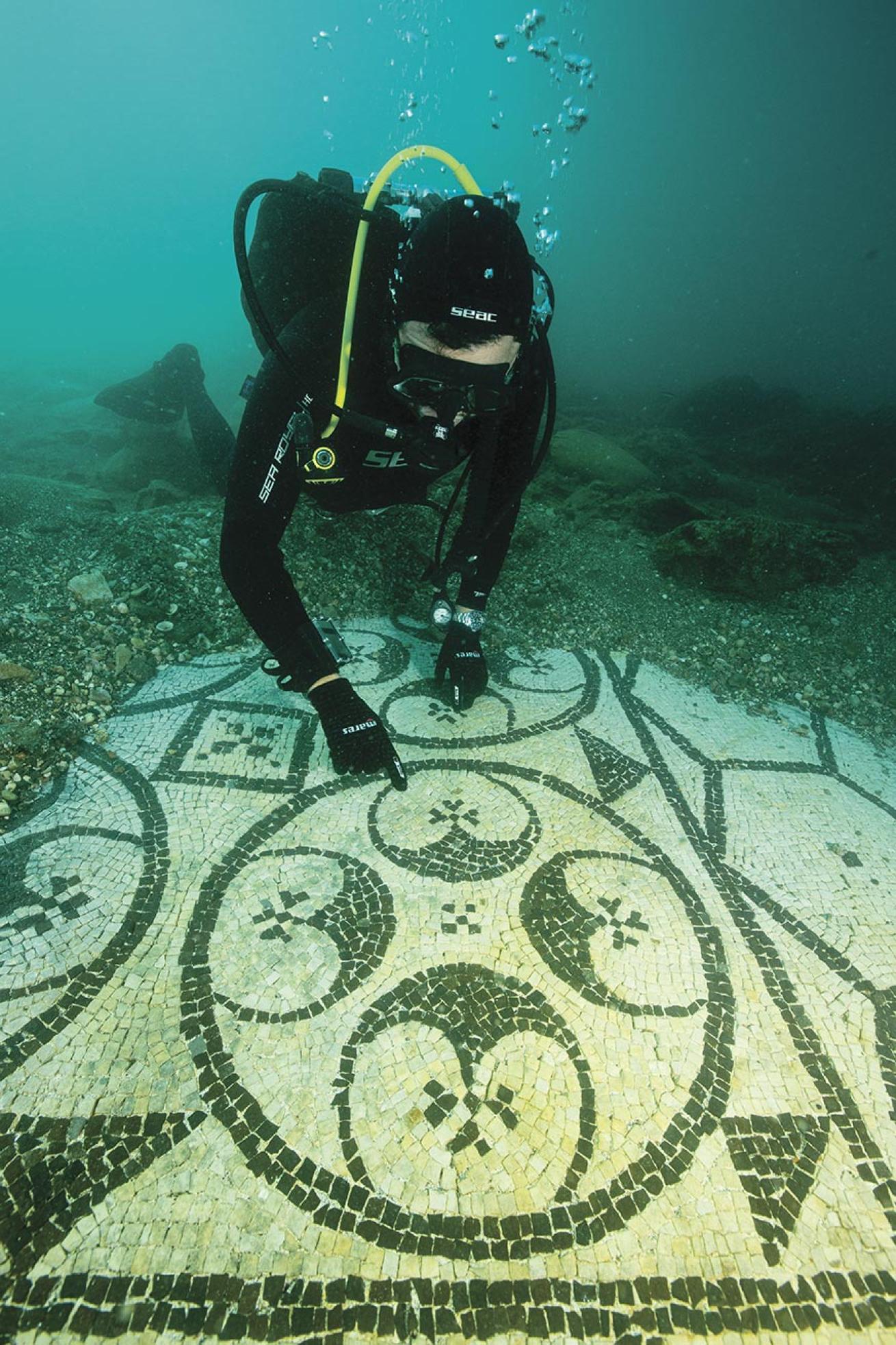
Franco BanfiA diver inspects a mosaic in the courtyard of a sunken villa in Baia, Italy.
8. Italy
Dive the Remains of a “Sunken” Roman City
Touring Roman ruins features on most travelers’ Italy itineraries. But diving to thermal baths and villas once owned by the likes of Caesar and Nero is a unique adventure you can only enjoy at the Submerged Archaeological Park of Baia, an ancient resort town near Pompeii. Beloved by Rome’s elite for its medicinal hot springs, the spas’ natural volcanic vents ultimately proved to be the site’s undoing, as water rose through them and flooded the city by the 1500s. —ALEXANDRA OWENS
Operator: Centro Sub Campi Flegrei (centrosubcampiflegrei.it)
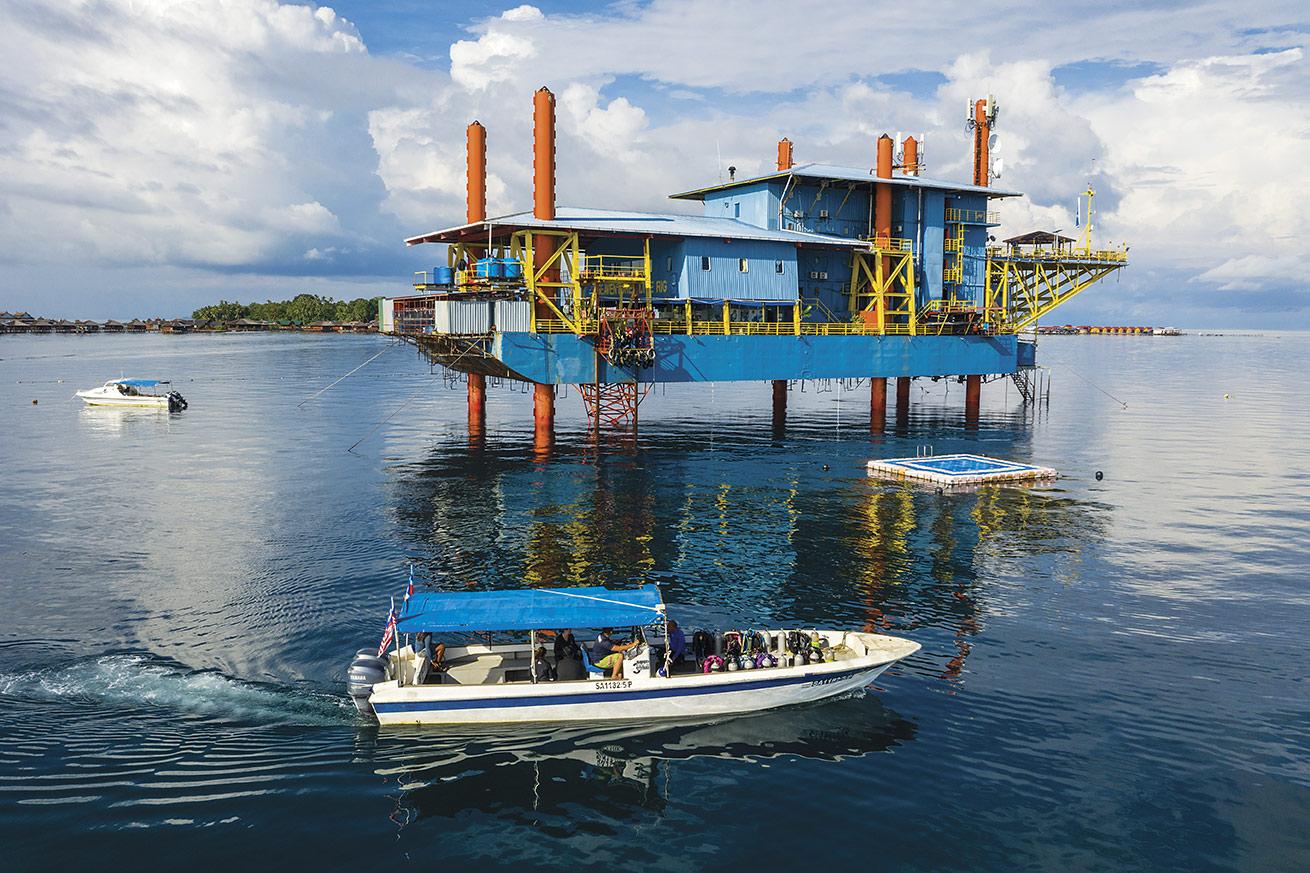
Brandon ColeThis unique PADI Five Star IDC Resort in the Celebes Sea is a refurbished oil rig.
9. Malaysia
Dive Under an Oil Rig Resort
Elevate your muck diving game by taking an elevator down to explore the house reef beneath the unique Seaventures Dive Rig near Mabul Island. No boat ride or shore entry required! All manner of marine life, from crocodilefish and mantis shrimp to blue ribbon eels and garish nudibranchs, awaits discovery on the sandy, rubbly bottom 55 to 60 feet deep among the assorted human-made features that include a rope bridge and crinoid-festooned car. Dive this critter-rich, hybrid natural and artificial habitat both day and night for bonus points. —BRANDON COLE
Operator: Seaventures Dive Rig (seaventuresdive.com)
Related Reading: How to Photograph Nudibranchs
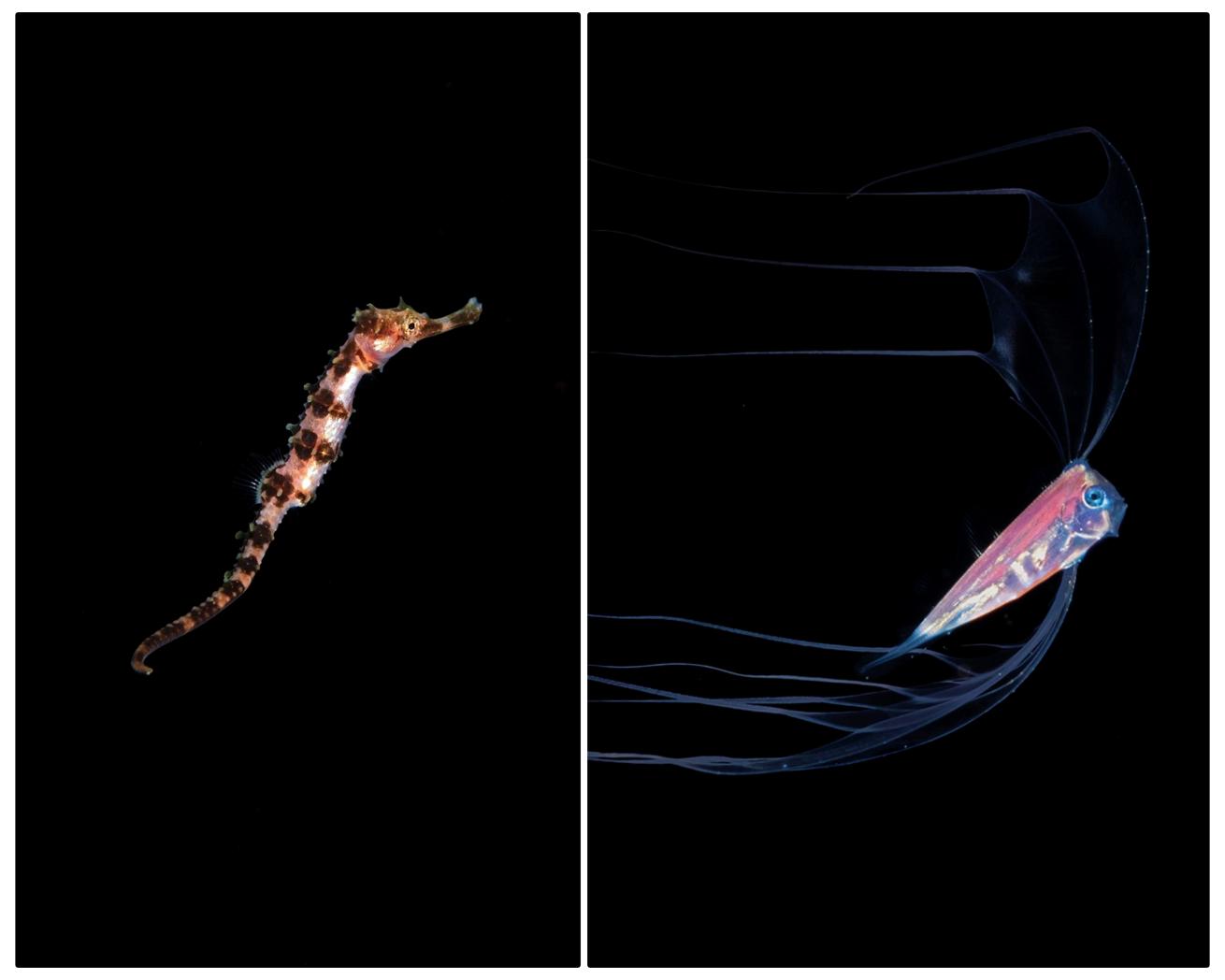
Sage OnoLeft: A pelagic seahorse drifts in the inky black off Kona. Right: An unidentified ribbonfish on a blackwater dive.
10. Hawaii
Witness the Largest Migration on Earth
Looking to challenge your buoyancy and critter-hunting skills? Try blackwater diving in Kona! Suspend yourself over thousands of feet of water as the denizens of the deep come up to greet you. When the sun goes down, pelagic organisms that would be eaten during the day migrate toward the surface to feed under the cover of darkness. Mixed in the medley are bouncing cephalopods, ornate larval fish and all manner of gelatinous life. Be warned, the wonders of the abyss may be smaller than you think.—SAGE ONO
Operator: Jack’s Diving Locker (jacksdivinglocker.com)
11. Mexico
Chase Tornadoes of Fish in Baja’s “Aquarium of the World”
Dubbed the “Aquarium of the World” by Jacques Cousteau, Cabo Pulmo National Park is home to over 800 marine species, including manta rays, bull sharks and sea turtles. One spectacle visitors should not miss is the massive swirling schools of jacks. These silvery fish can gather by the thousands and blot out the sun. —SAGE ONO
Operator: Cabo Pulmo Beach Resort (cabopulmo.com)
12. Saudi Arabia
See a Side of the Red Sea Largely Unknown to Divers
Only recently opened to tourism, Saudi Arabia’s Red Sea shore along the country’s western coast is almost entirely crowdfree–and still largely unexplored underwater by divers. Book a stay on the island of Sindalah to take in the area’s worldrenowned reefs in the lap of luxury. —TERRY WARD
Operator: Dive Butler Sindalah (divebutlerinternational.com)
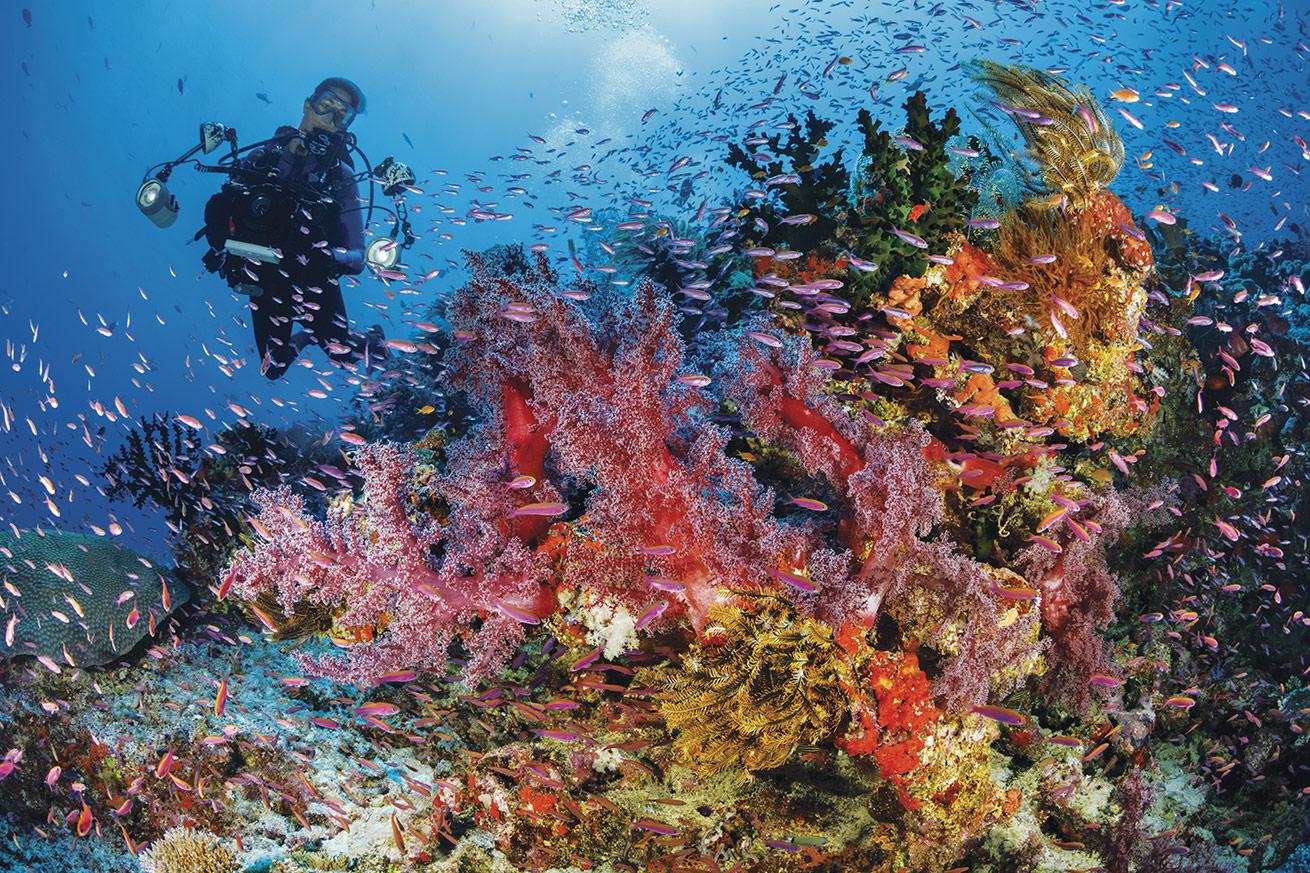
Brandon ColeSchooling anthias and vibrant sponges, crinoids and corals coalesce into a stunning Fiji reefscape.
13. Fiji
Experience Reefscape Photography Nirvana
Connoisseurs of kaleidoscopic seascapes rejoice! Breathtaking, über-colorful wide-angle photos of soft corals, sea fans and swarms of anthias practically take themselves on the current-swept reefs headlining this South Pacific destination. The Bligh Waters and Namena Marine Protected Area are both particularly productive underwater photo studios. —BRANDON COLE
Operator: Garden Island Resort (gardenislandresort.com)
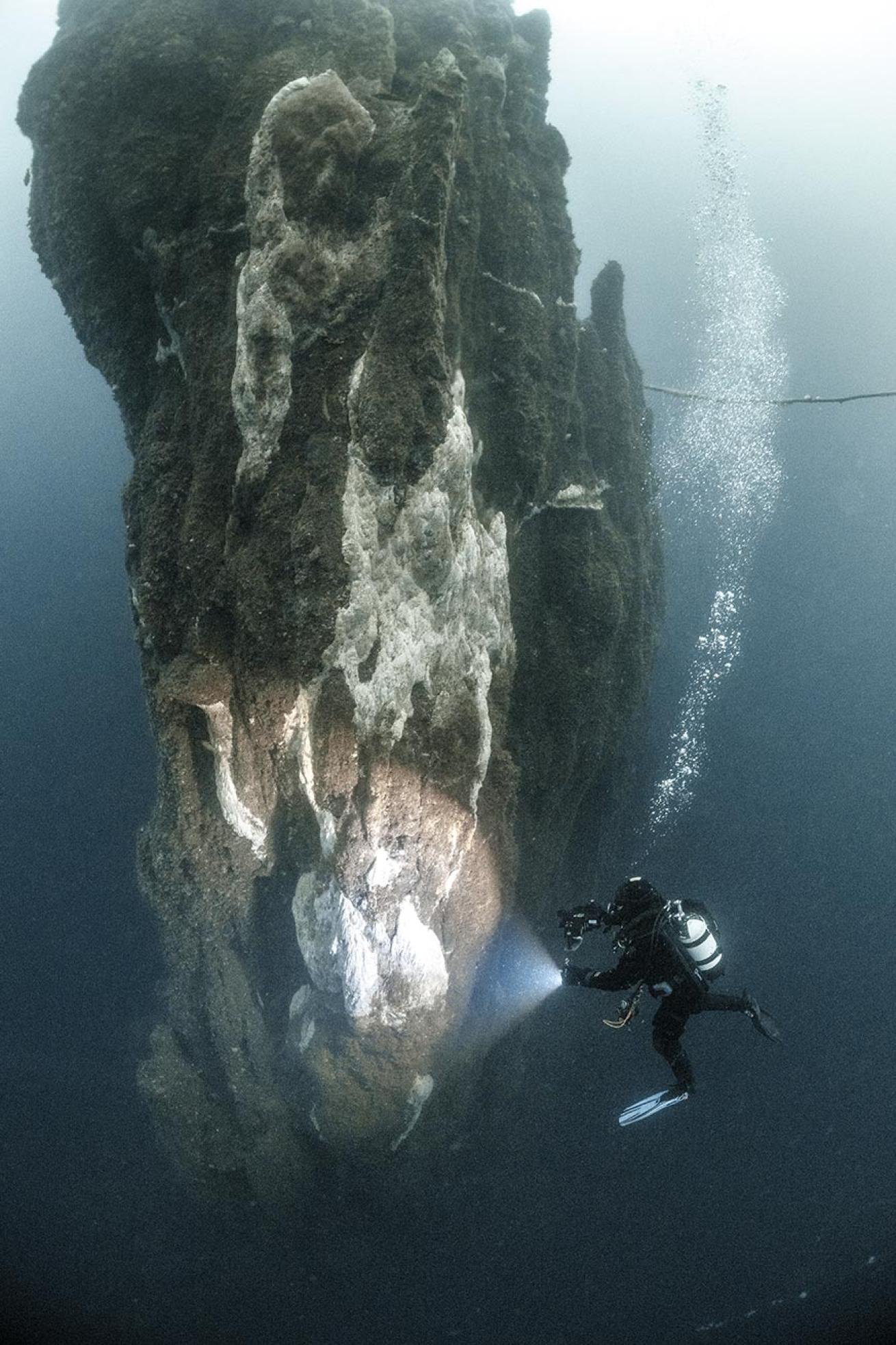
Steve JonesThe Strýtan hydrothermal chimney.
14. Iceland
Dive the Earth’s Only Accessible Hydrothermal Chimneys
Though Iceland’s Silfra fissure ends up on many a diver’s bucket list, Strýtan chimney is a lesser known site that is just as rare and unique. Located in the Eyjafjörður fjord near Akureyri, these towering hydrothermal chimneys rise from 213 feet to just 49 feet below the surface. The structures emit warm, mineral-rich water, creating a surreal underwater landscape teeming with marine life like cod, wolffish and colorful anemones, all within recreational diving depths. —CANDICE LANDAU
Operator: Strýtan DiveCenter (strytan.is)
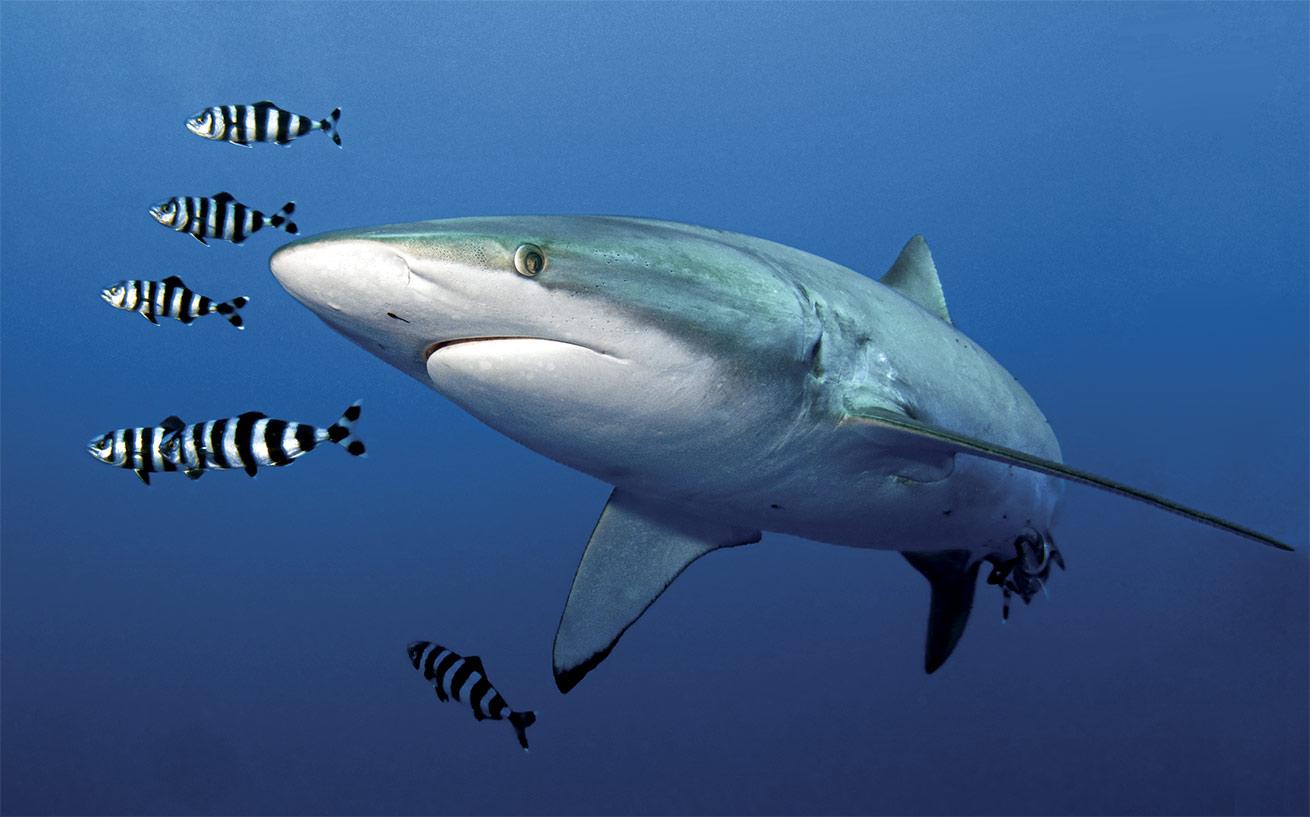
Courtesy All Star LiveaboardsA silky shark in the Red Sea.
15. Red Sea
Sail Aboard a Floating Shark School
What’s better than diving with sharks? Try diving alongside shark expert Dr. Elke Bojanowski in the Egyptian Red Sea on one of her Shark Week itineraries aboard All Star Scuba Scene. Enjoy lectures on shark behavior and conservation, and dive sites that offer the best chances to encounter hammerheads, gray reef sharks, whale sharks and more. —CANDICE LANDAU
Operator: All Star Liveaboards (allstarliveaboards.com)
Related Reading: Diving in Saudi Arabia: Discover the Red Sea’s Newest Dive Haven
16. Utila
Train on a Budget in the Bay Islands
With so many reputable dive centers, Utila—the smallest of the main Bay Islands—is the Caribbean’s no-brainer for wallet-friendly certifications and epic diving. Earn certs ranging from PADI Open Water Diver to Instructor and beyond while swimming alongside parrotfish, angelfish and—if you’re lucky—a whale shark or two. On-island operators give you access to more than 60 sites, expert instructors and warm waters with 90-foot visibility. Whether you’re new to diving or chasing the next level, Utila’s laid-back charm seals the deal. —ALEXANDRA GILLESPIE
Operator: Utila Dive Center (utiladivecenter.com)
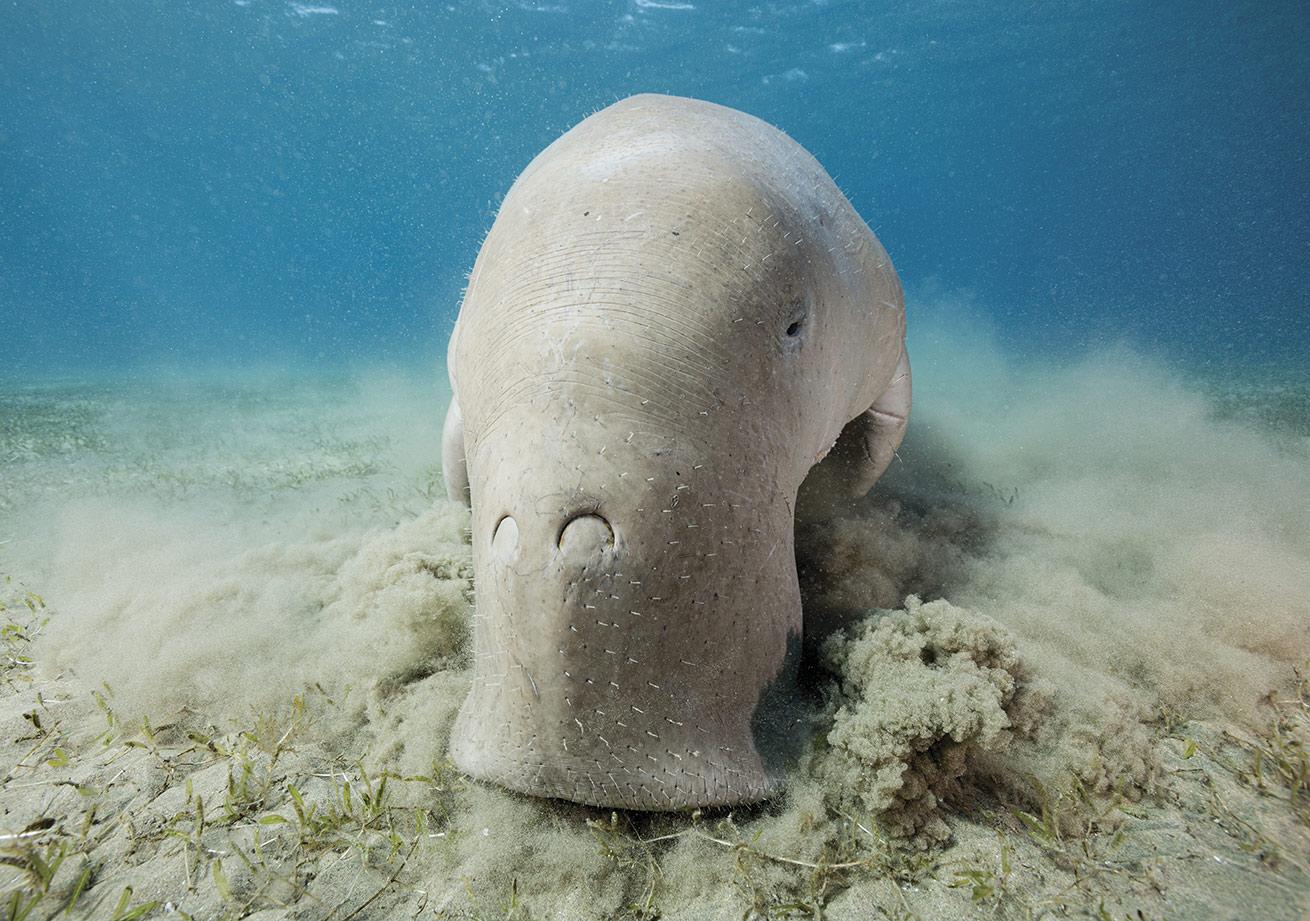
Brandon ColeA dugong feeds on seagrass in a shallow bay on Egypt's Red Sea coast.
17. Egypt
Prove Your Dedication to the Dugong
Support the Red Sea’s real live mermaids by completing the PADI Dugong Appreciation specialty certification, then visit shallow Mubarak Bay for a chance to see one munching on seagrass. Dugongs—gentle marine mammals resembling a cross between a hippopotamus and a potato—are, like manatees, classified in the order Sirenia. Legend has it they were long ago mistaken by sailors for sexy seductresses. —BRANDON COLE
Operator: Emperor Divers Port Ghalib (emperordivers.com)
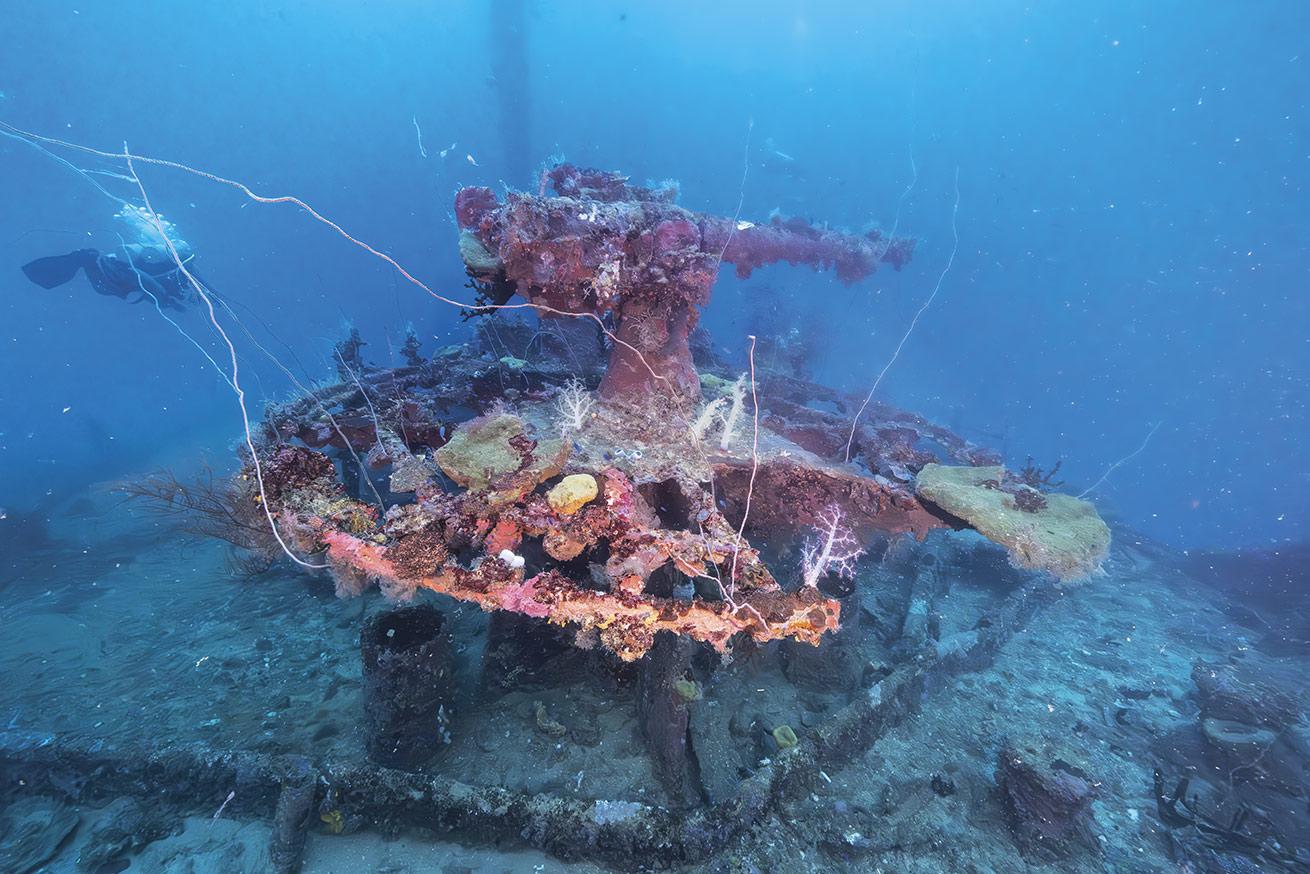
Candice LandauA gun on the San Francisco Maru’s bow.
18. Chuuk
Discover a Hoard of Historical Weaponry
Immerse yourself in history by diving the San Francisco Maru—known as the “Million Dollar Wreck”—in Chuuk Lagoon. Sunk in 1944 during Operation Hailstone, this 385-foot-long former Japanese cargo ship rests at depths of 165 to 213 feet, offering qualified divers a glimpse into World War II relics, including tanks, trucks, mines and ammunition. —CANDICE LANDAU
Operator: Odyssey Adventures (trukodyssey.com)
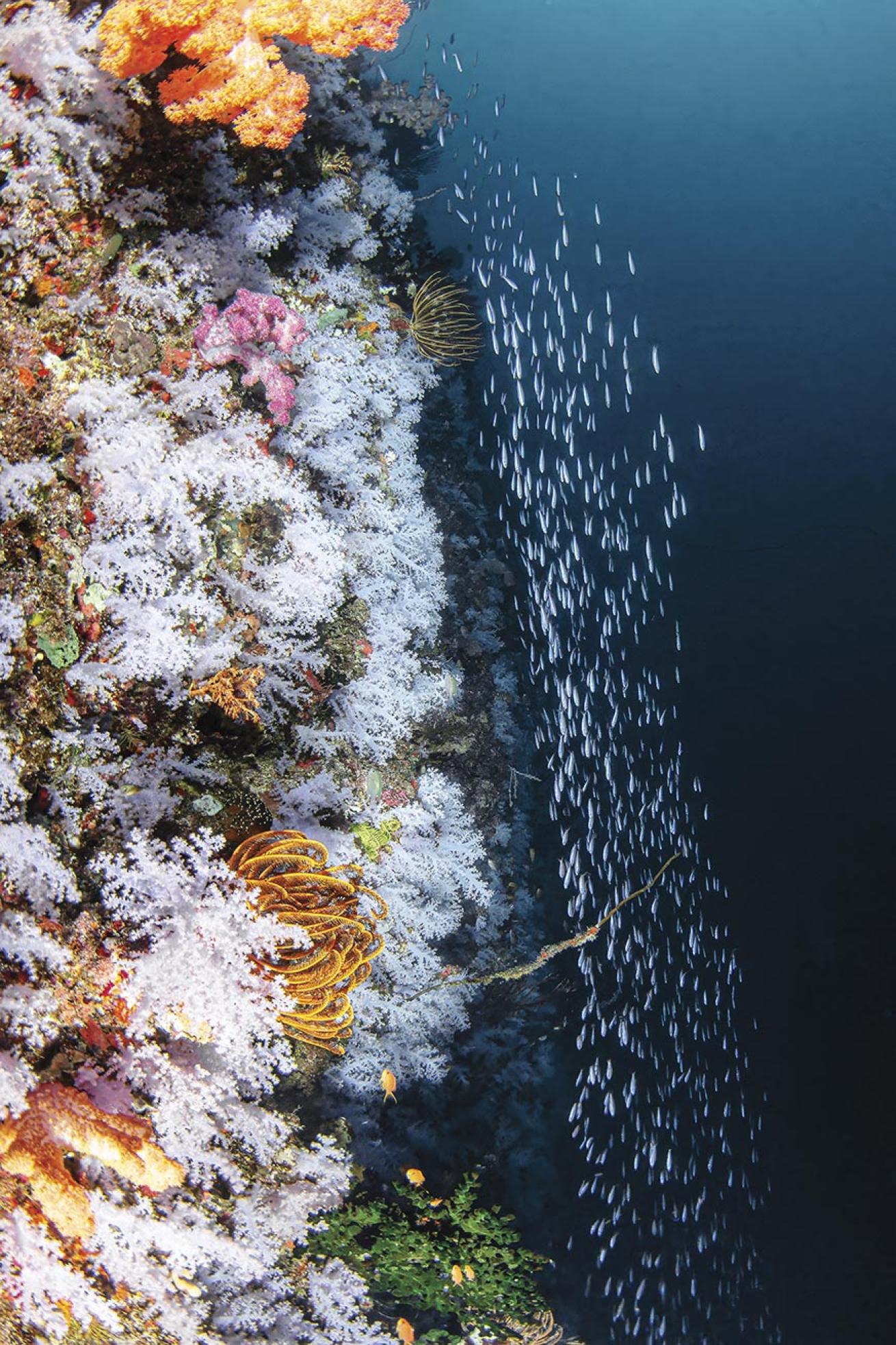
Lureen FerrettiA blanket of coral lights up Fiji’s Great White Wall.
19. Fiji
Cruise the Great White Wall
Fiji’s Rainbow Reef is home to vivid corals, but it’s worth diving at the reef’s Great White Wall for desaturated splendor. Soft white corals cloak the reef like snow, with vibrant fish, crustaceans and lacelike gorgonian fans as ornaments. A long swim-through leads you to the wall at around 65 feet deep, with corals spanning in every direction. You’ll want to research with a dive operator for more information when booking a trip because the corals only bloom at certain times of the month. —CHANTAE REDEN
Operator: Sau Bay Resort & Spa (fijidiveresort.net)
20. Palau
Let the Moon Plan Your Itinerary
In Palau, diving by the lunar calendar offers a front-row seat to spawning aggregations of randy fish looking to seed the next generation. When the moon strikes full, Palau’s red snappers gather en masse, forming swirling schools many stories high, while the new moon brings hundreds of bumphead parrotfish vying for mates with bold displays of dominance. —ARIELLA SIMKE
Operator: Sam’s Tours (samstours.com)
21. Florida
Explore a Titanic Reef in the Panhandle
The USS Oriskany, a 911-foot aircraft carrier turned world’s largest artificial reef, lies at a depth of 84 to 212 feet off Pensacola. Divers can swim the sprawling flight deck or towering superstructure of the “Mighty O,” which teems with snapper, grouper and vibrant coral. Viz can be exceptional, but currents and depth make it a thrill fit for seasoned divers. —ALEXANDRA GILLESPIE
Operator: Dive Pros (florida-divepros.com)
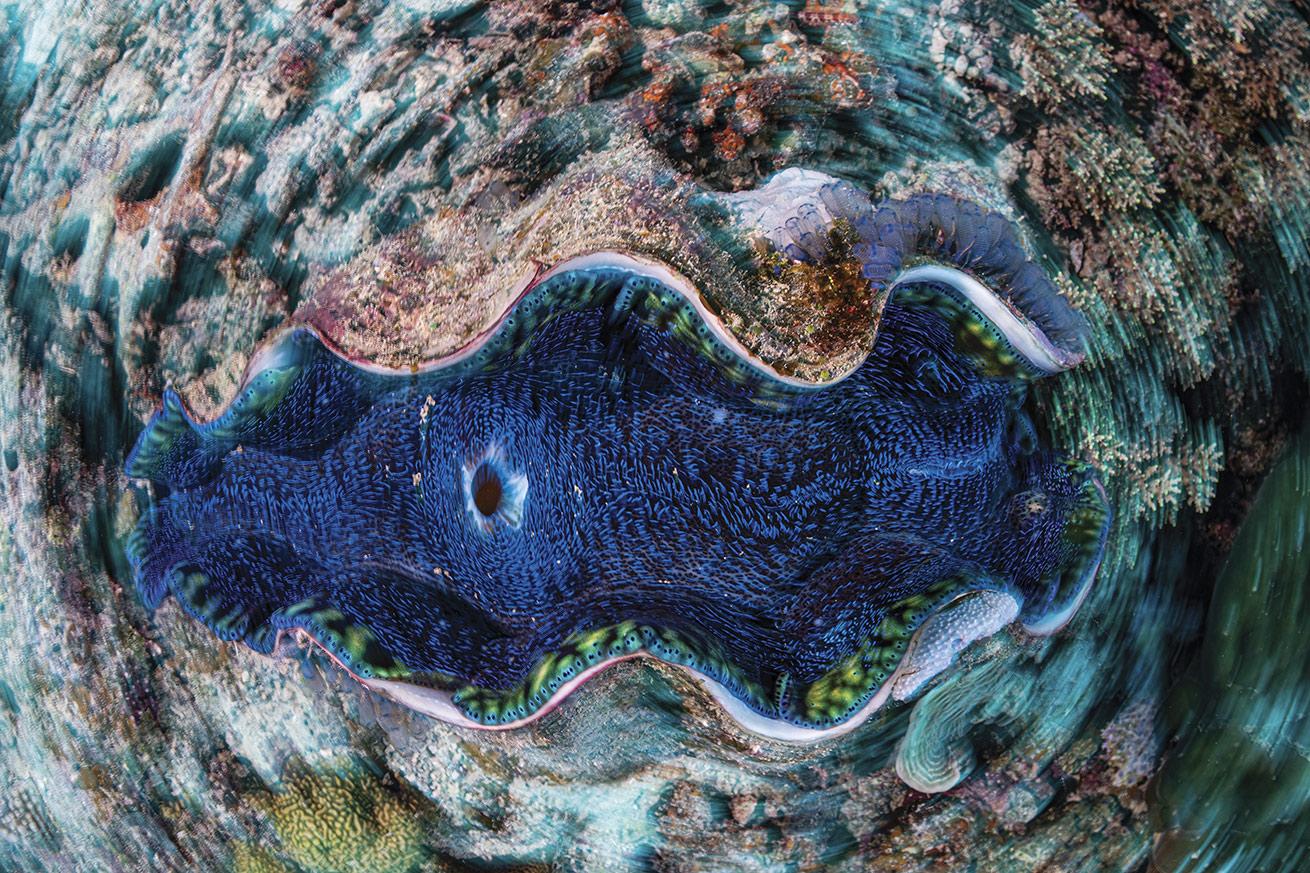
Sage OnoAn iridescent giant clam in Australia.
22. Australia
Dive with a Centenarian on the Great Barrier Reef
While staying at Great Barrier Reef outposts such as Heron Island or Lady Elliot Island, you can take a reef walk when the tide recedes. Here, you might spot a 100-year-old creature: The giant clam is the largest bivalve mollusk, growing up to 4 feet in length and averaging 400 pounds. When the walk is over and it’s time to dive, you’ll spot these clams thanks to their psychedelic colors. Known as one of the “Great Eight” species of the Great Barrier Reef, giant clams open by day to allow commensal algae to photosynthesize. —ANDY ZUNZ
Operator: Lady Elliot Island Eco Resort (ladyelliot.com.au)
23. Bahamas
Visit an Underwater Movie Set
Positioned on the white sand off New Providence Island are two wrecks that need no introduction for diehard James Bond fans: the Tears of Allah and Vulcan bomber, both featured in Sean Connery-era Bond films. With crystal-clear viz, little current and easy access (both dives max out at less than 50 feet), you’ll enjoy optimal conditions and the resident marine life the Bahamas is known for. —ANDY ZUNZ
Operator: Stuart Cove’s Dive Bahamas (stuartcove.com)
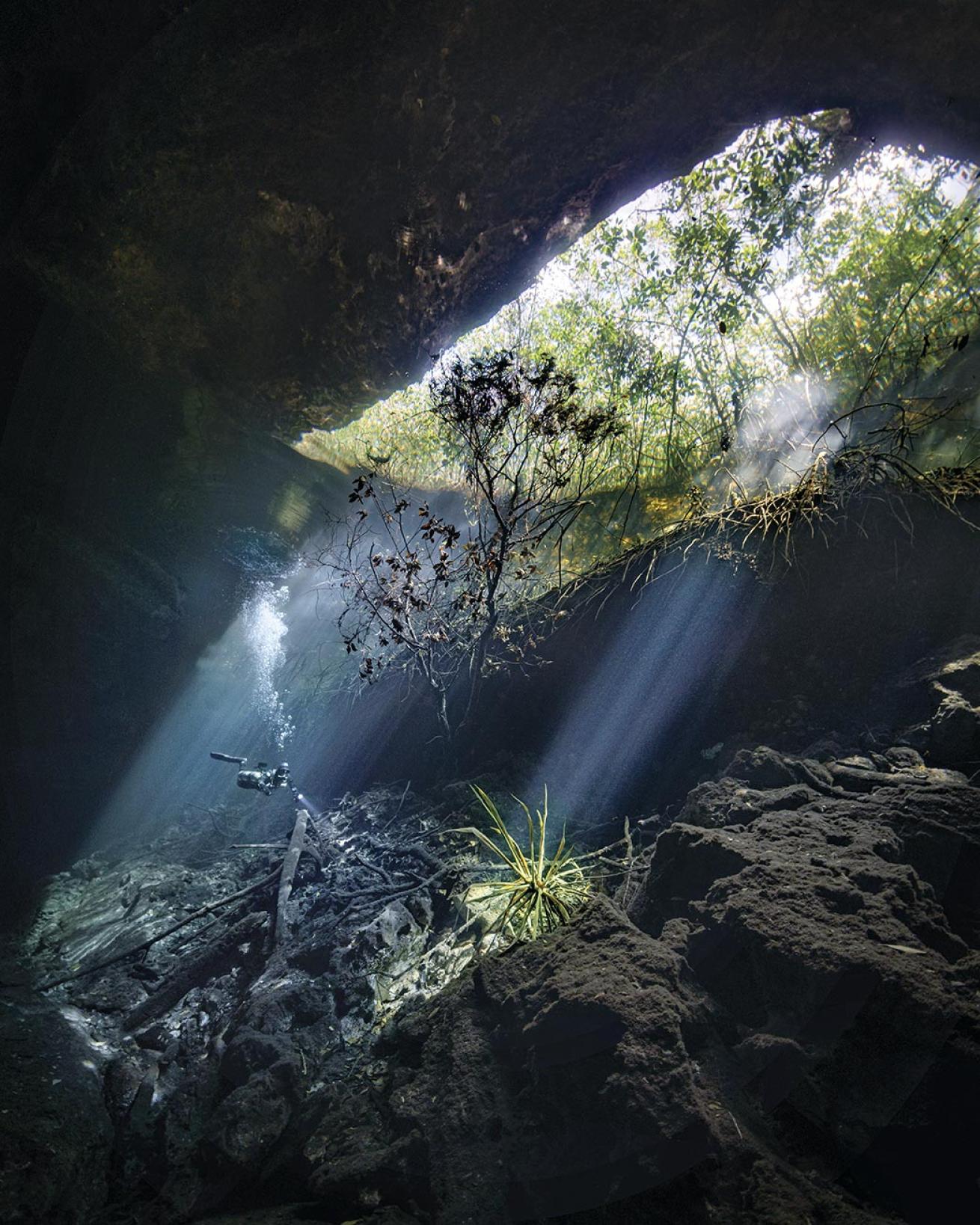
Alex DawsonSunbeams cascade through the forest and the ceiling of Mexico’s Garden of Eden cenote.
24. Mexico
Spot Ancient Marine Fossils in the Cavern Walls
The vast ancient underwater caverns and cave systems, called “cenotes,” of the Yucatán Peninsula offer a unique opportunity to witness fossilized corals that are millions of years old. As you navigate through crystal-clear waters, looming stalactite and stalagmite formations, eerie haloclines and hydrogen sulfide clouds, you’ll discover remnants of a bygone era. Cenotes can be explored by open-water divers, but consider preparing with a cavern cert. —ARIELLA SIMKE
Operator: Cave Training Mexico (cavetrainingmexico.com)
25. Dominican Republic
Dive into Island Life
One of the best day trips in the DR is from Bayahibe aboard a snorkeler-friendly catamaran that cruises just offshore to Catalina Island. Here, divers delight at unique wall formations that surround the island and are home to some of the tallest pillar corals in the Caribbean while their snorkeler companions can swim through clouds of schooling grunts in the shallows. Everyone unites later in the day for a Dominican-style beach barbecue on the white-sand island, where nature trails through the tropical brush lead to hidden swimming spots. —TERRY WARD
Operator: Scuba Caribe (scubacaribe.com)
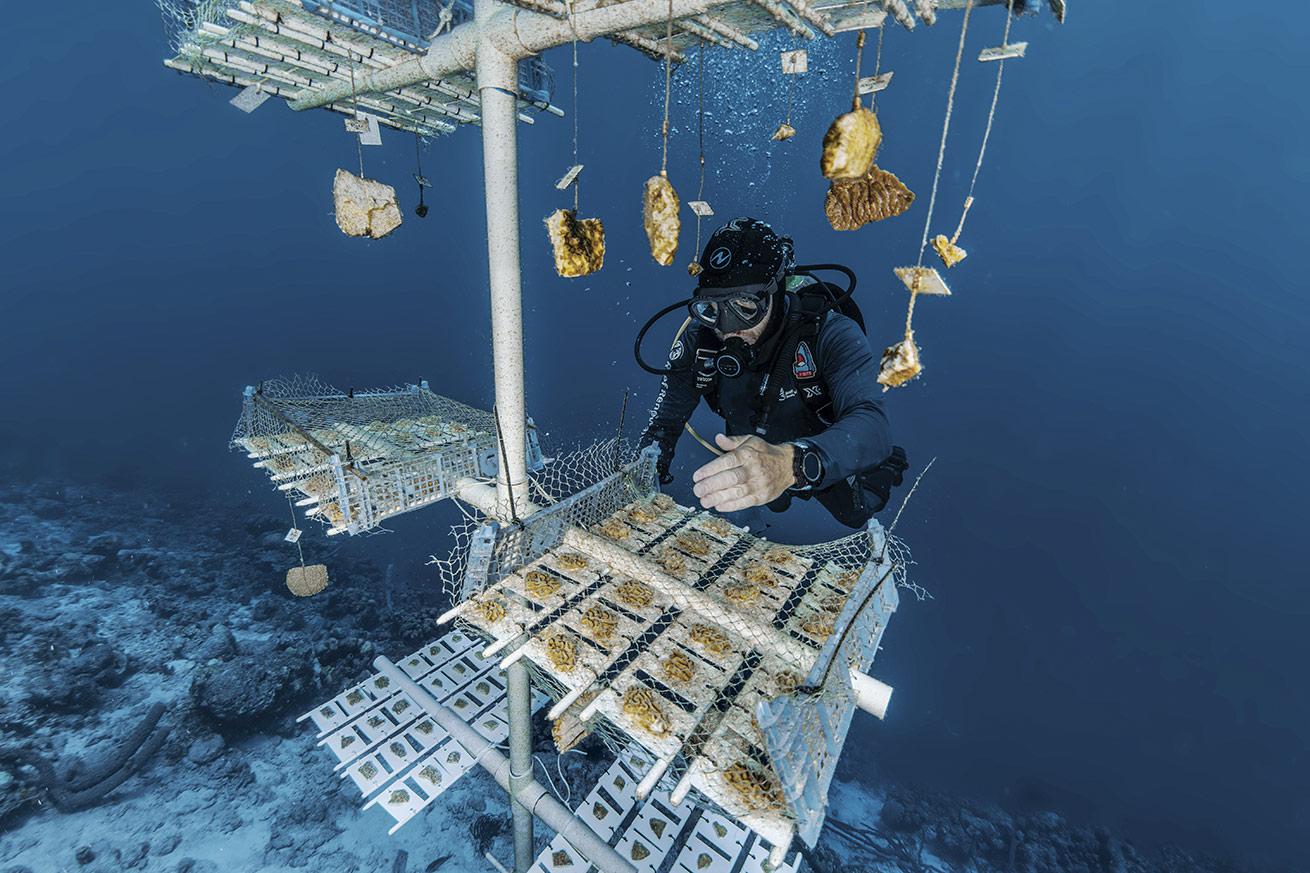
Lorenzo MittigaA diver with Reef Renewal Bonaire tends to a coral nursery.
26. Bonaire
Restore the Reef
As the old saying goes, “leave things better than you found them.” For those with a love of conservation, there are few better opportunities than Reef Renewal Bonaire’s volunteer program. Divers can learn the basics of coral nursery maintenance, outplanting and propagation as they create a better future for Bonaire’s coral reefs. Once they’re trained, divers can return year after year to donate their time and watch the reef grow ever healthier. —SAGE ONO
Operator: Plaza Beach & Dive Resort Bonaire (plazaresortbonaire.com)

Brandon ColeSmoothtail mobula rays feed on plankton during a Sea of Cortez night dive.
27. Mexico
Camp Under the Stars After a Night Dive With Mobulas
If being in a tornado of feeding mini-mantas under the cover of darkness and then reliving the surreal experience while dreaming in a beachside tent piques your interest, make your way to La Paz without further delay. This refreshingly different tour is offered on beautiful Espiritu Santo Island in the Sea of Cortez. Come for the mobula ray night dive, stay to watch the stars shining above the cacti at midnight. Wake up to breakfast on the beach, and then hike, kayak, stand-up paddleboard or scuba dive (duh) the new day away. —BRANDON COLE
Operator: Fun Baja (funbaja.com)
Related Reading: Trending Dive Spots: Magdalena Bay, Mexico
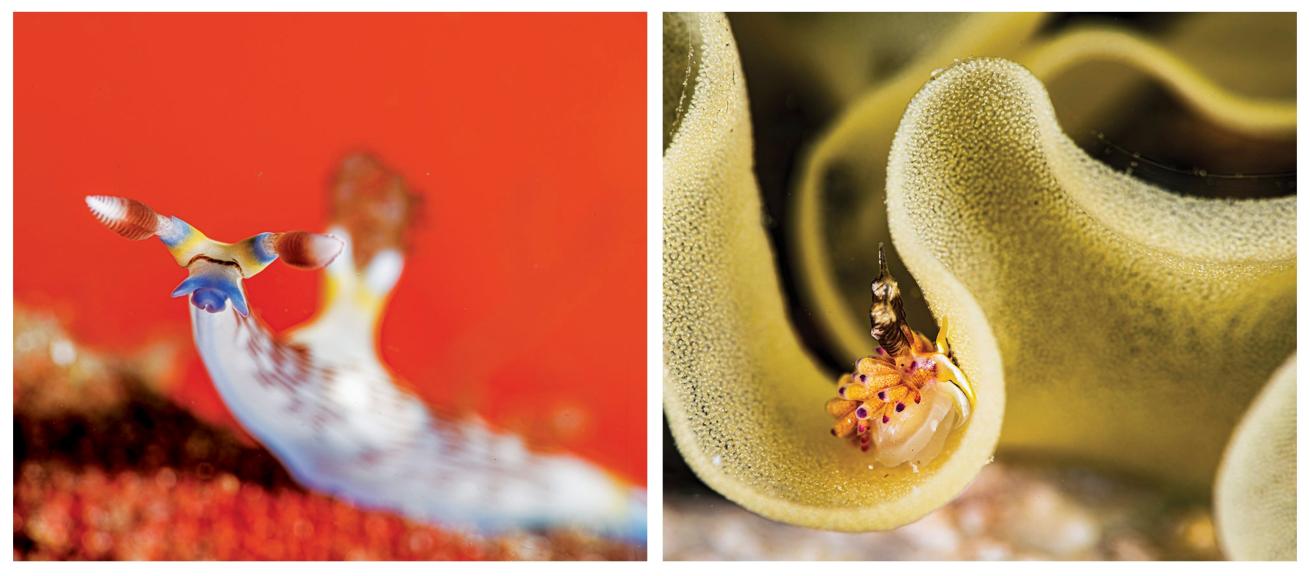
Sage OnoLeft: Nembrotha lineolata in Anilao.; RIght: Favorinus mirabilis atop an egg ribbon.
28. Philippines
Scout for Slugs in the Muck
Whether it’s your fifth dive or your 500th, the thrill of seeing something for the first time never gets old. That thrill is all but guaranteed for sharp-eyed divers visiting Anilao, aka the “nudibranch capital of the world.” With more than 600 species, the seafloor is a glittering treasure trove of colorful slugs. If nudibranchs aren’t your style, the friendly guides in these parts are experts at finding all sorts of critters, from flamboyant cuttlefish to pygmy seahorses. —SAGE ONO
Operator: Buceo Anilao Beach & Dive Resort (buceoanilao.com)
29. Florida
Hit Three Wrecks on One Tank
When you submerge on the Fort Lauderdale Wreck Trek and the current picks up, there’s no need to panic— you’ll just be making your way to the next sunken attraction. This site includes three main wrecks—the Tracey, Jay Scutti and Merci Jesus—all closely positioned so divers can hit as many as possible on one tank. Keep an eye out for schooling tropical fish and lobsters taking refuge. —ANDY ZUNZ
Operator: Sea Experience (seaxp.com)
30. Hawaii
Dive a Crater 230,000 Years in the Making
Molokini is a crescent shaped volcanic crater whose embers have long been extinguished. Today, over 200 species of fish and around 40 types of corals find refuge here. In calm conditions, the back wall of the crater reveals interesting reef formations and a chance to see whale sharks, mantas and sharks. —CHANTAE REDEN
Operator: Maui Dreams Dive Co. (mauidreamsdiveco.com)
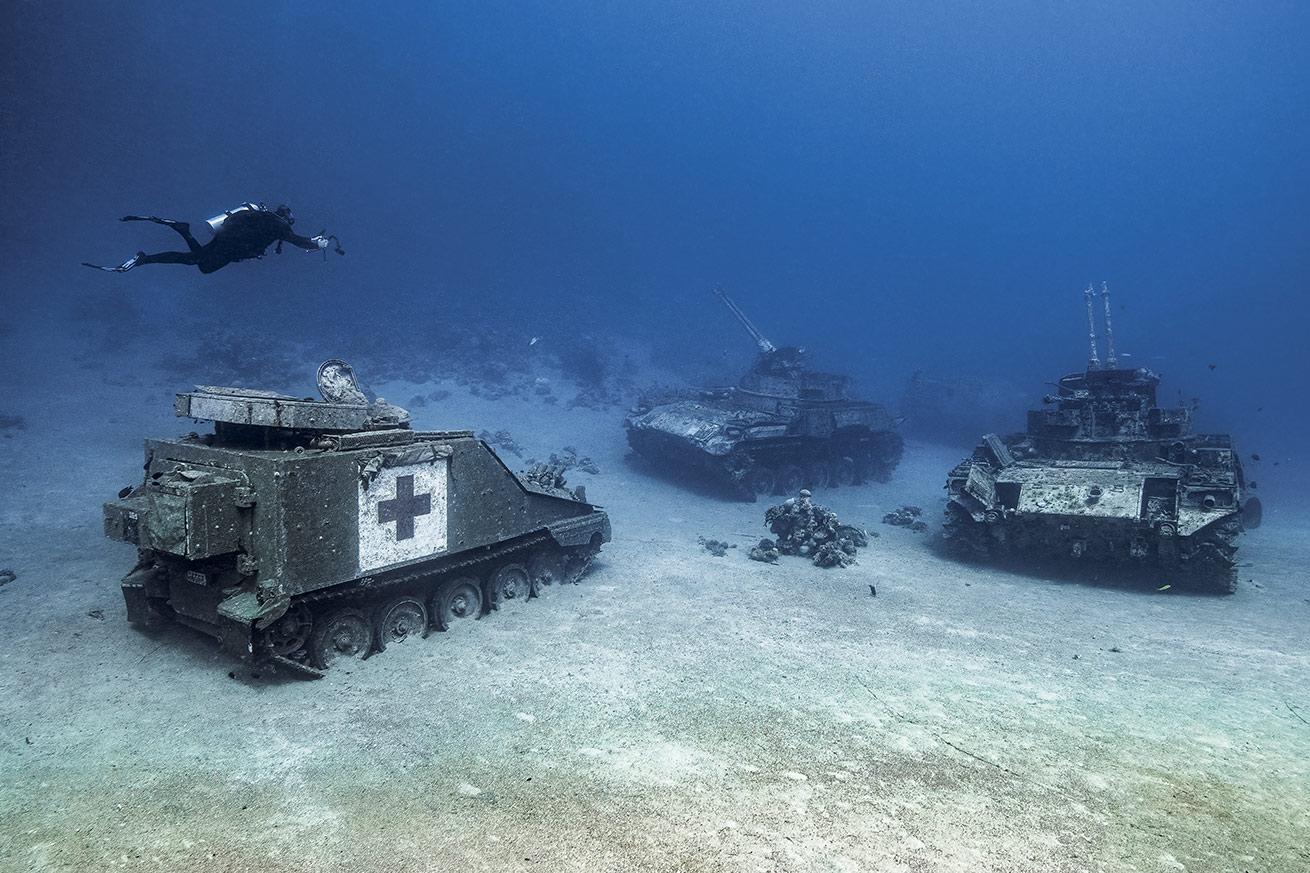
Brook PetersonSunken military vehicles dot the sandy seafloor at the Underwater Military Museum in Aqaba, Jordan.
31. Jordan
Survey an Underwater Arsenal
Plunge into Aqaba’s sunken battlefield at the world’s first Underwater Military Museum, where 21 military relics—including tanks, armored cars, and a Cobra attack helicopter—sit in frozen formation. With depths ranging from 16 to 92 feet, this Red Sea play park welcomes divers of all skill levels. Whether you enter from shore or boat, you’ll watch marine life give these war machines a new life. —ALEXANDRA GILLESPIE
Operator: Deep Blue Dive Center (deepbluedivecenter.com)
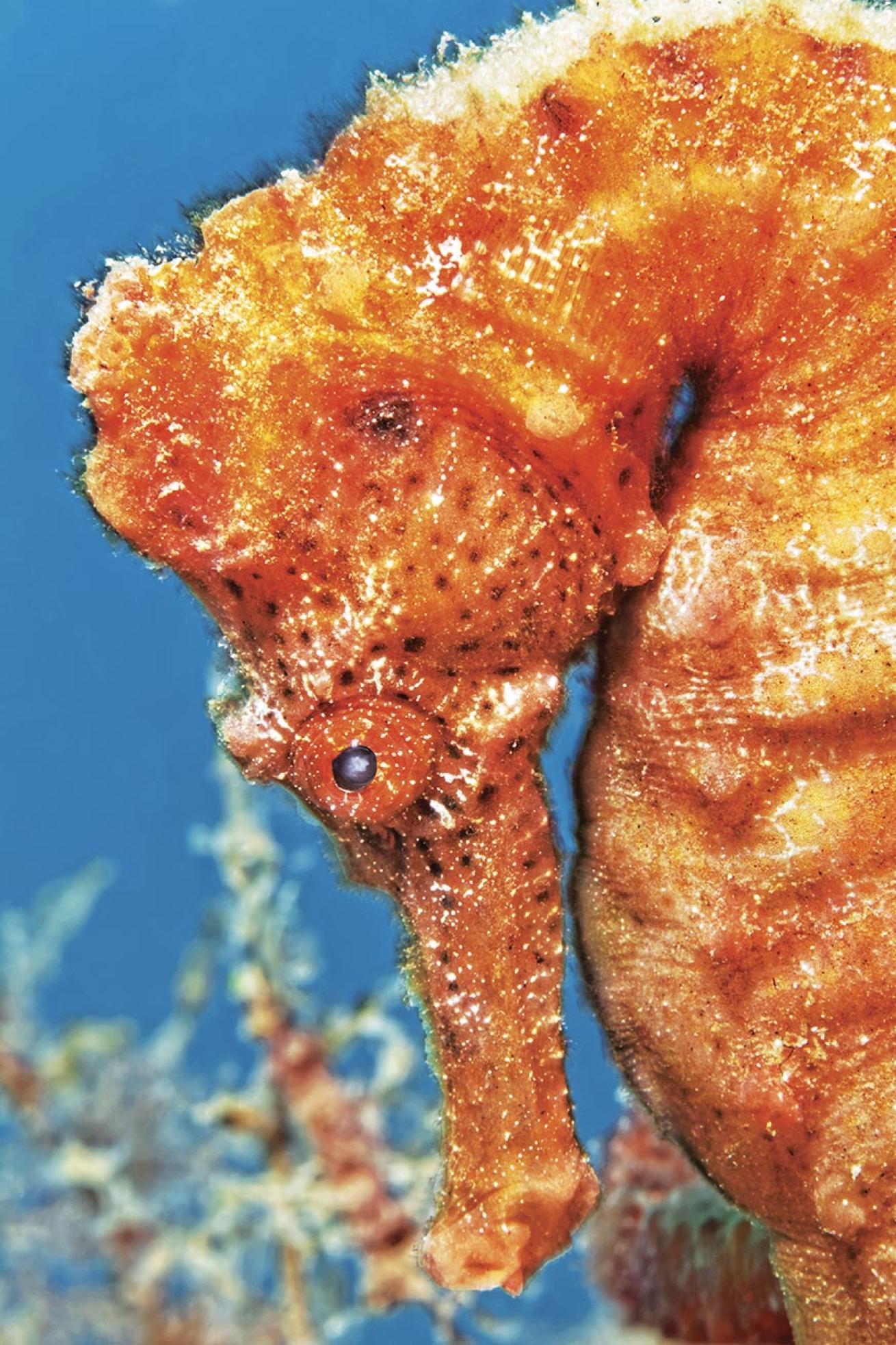
Tobias FriedrichA longsnout seahorse.
32. Barbados
Nose Around for Longsnout Seahorses at an Abandoned Factory
Piers absolutely carpeted in corals are your welcome mat when you head underwater to dive the remains of a cement factory on the west coast of Barbados. Easily accessible by boat to a wide range of divers in just 30 feet of water, this beloved site is most famous for its reliable sightings of elegant longsnout seahorses. But you’ll also likely spot massive barracuda, clouds of chromis and damselfish, and perhaps even frogfish and colorful nudibranchs. —TERRY WARD
Operator: Barbados Blue Watersports (divebarbadosblue.com)
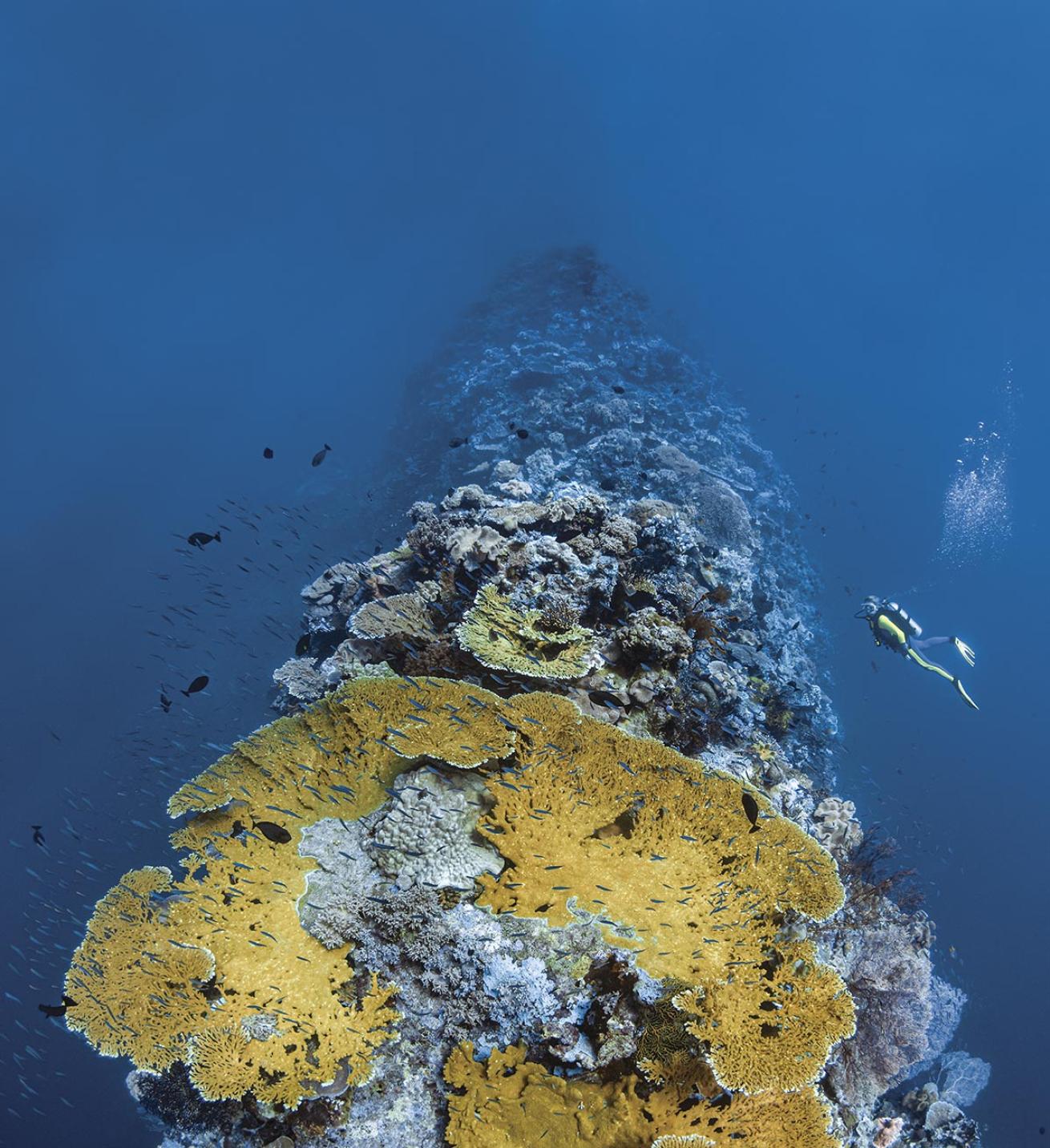
Courtesy Wakatobi Dive ResortA diver with Wakatobi visits the site Blade.
33. Indonesia
Explore Your Way From a Private Island
Dive all day or extend your surface intervals with a decadent meal or spa treatment at Wakatobi Dive Resort in Sulawesi. Prime diving is a few steps from shore, and over 40 sites await within reach of the resort’s dayboat. For overnight endeavors, board Pelagian, Wakatobi’s dive yacht. There’s no wrong way to experience this biodiversity hotspot. —CHANTAE REDEN
Operator: Wakatobi Dive Resort (wakatobi.com)
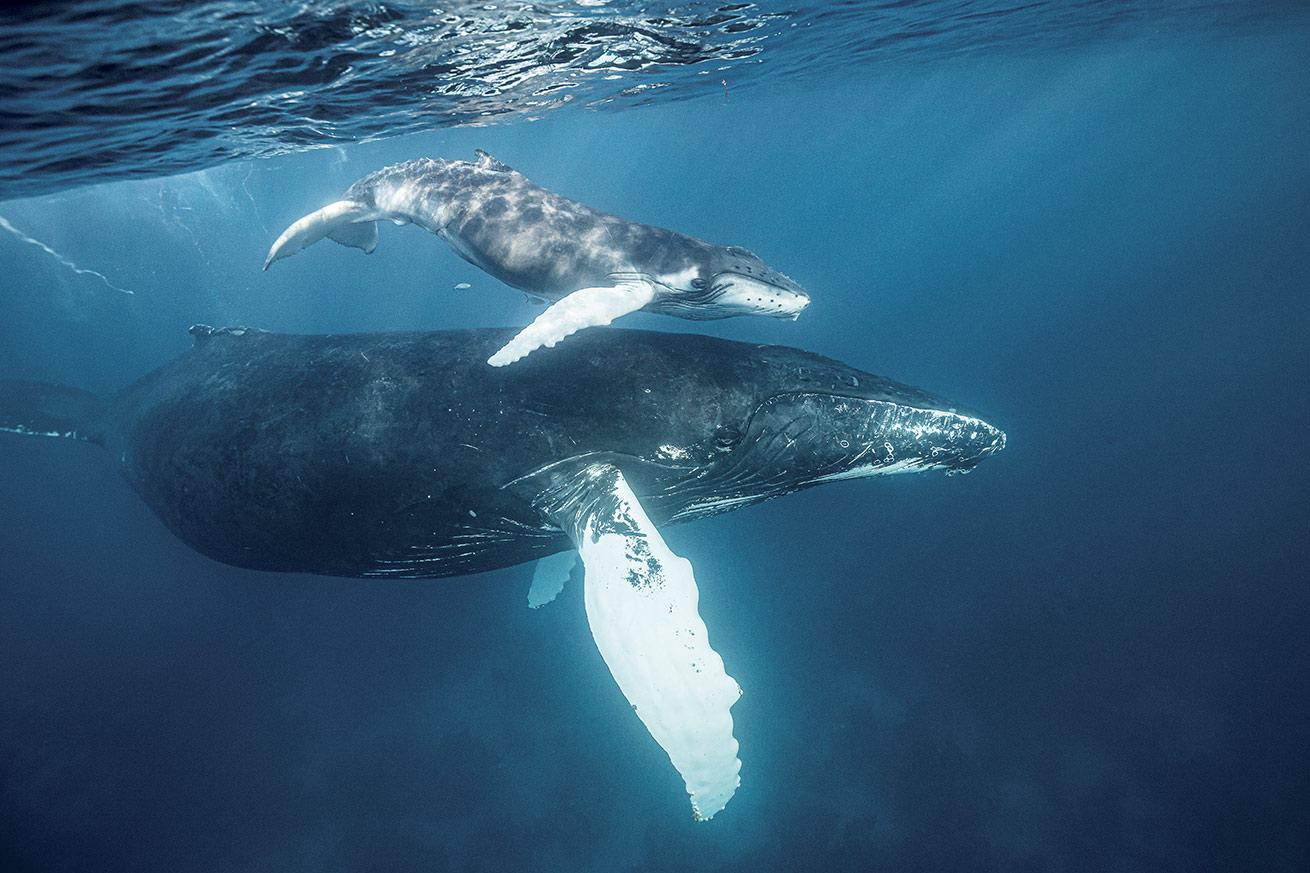
Brent DurandA mother humpback whale swims with her calf at Silver Bank.
34. Dominican Republic
Snorkel With Humpbacks at Silver Bank
From January to April, the shallow shoals of Silver Bank, about 80 miles off the northern coast of the Dominican Republic, transform into a humpback whale playground. Glide by curious calves, watchful mothers and singing males. The warm, clear waters set a perfect stage for an intimate connection with these majestic creatures. Liveaboards such as Turks & Caicos Aggressor II put you in the heart of the action, delivering an unforgettable encounter with the ocean’s most soulful giants. —ALEXANDRA GILLESPIE
Operator: Aggressor Adventures (aggressor.com)
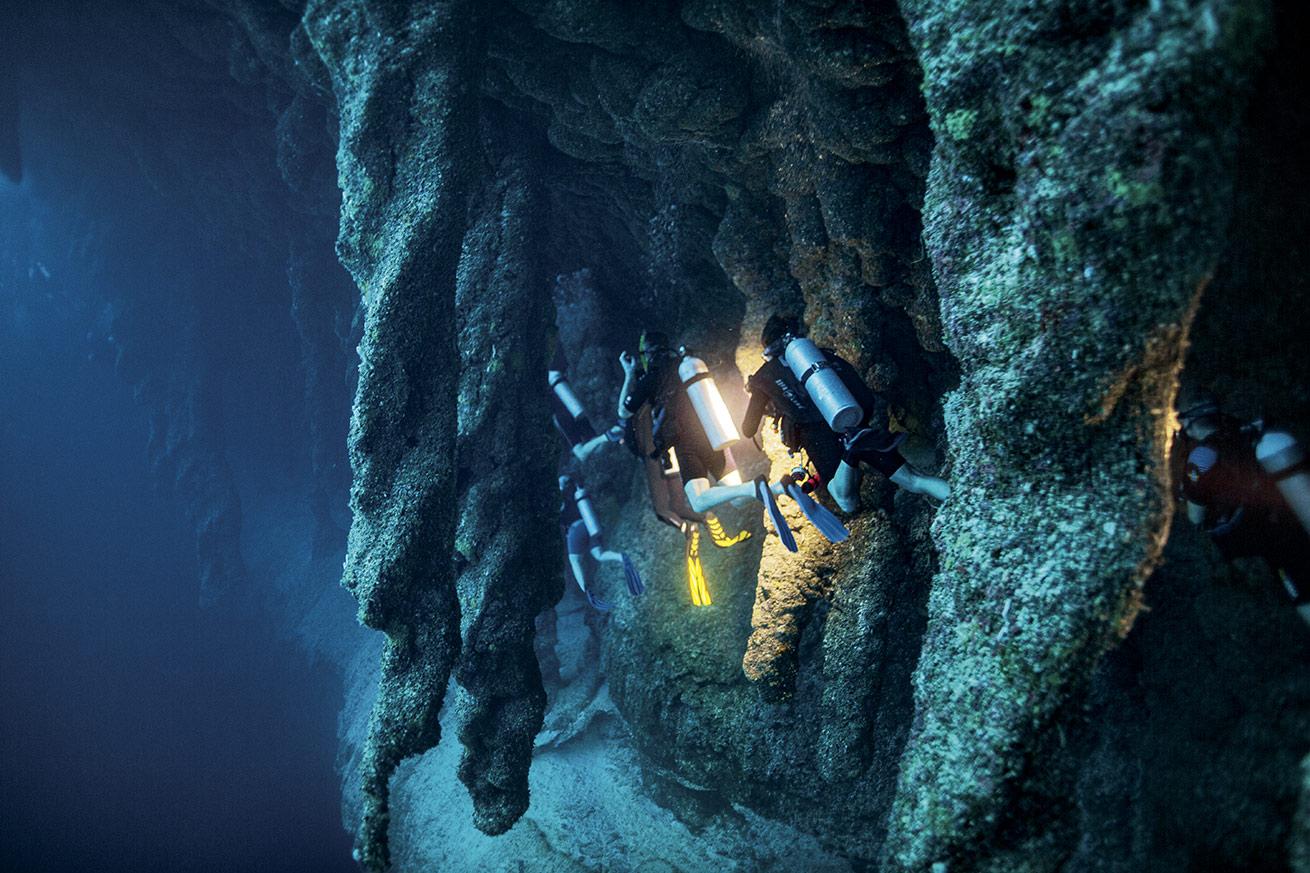
Timo DerschFormations at the Great Blue Hole.
35. Belize
Dive a Site That Can Be Seen From Space
When it comes to dive sites that double as natural marvels, the Great Blue Hole ranks among the top. This marine sinkhole spans 1,000 feet wide amid the much shallower waters of Belize’s Lighthouse Reef Atoll. The resulting dark blue circle can be seen by satellite. Underwater, you’ll plunge into the blue abyss until you reach 110 feet, where stalactite formations add to the otherworldly aura. —ANDY ZUNZ
Operator: Ramon’s Village Resort (ramons.com)
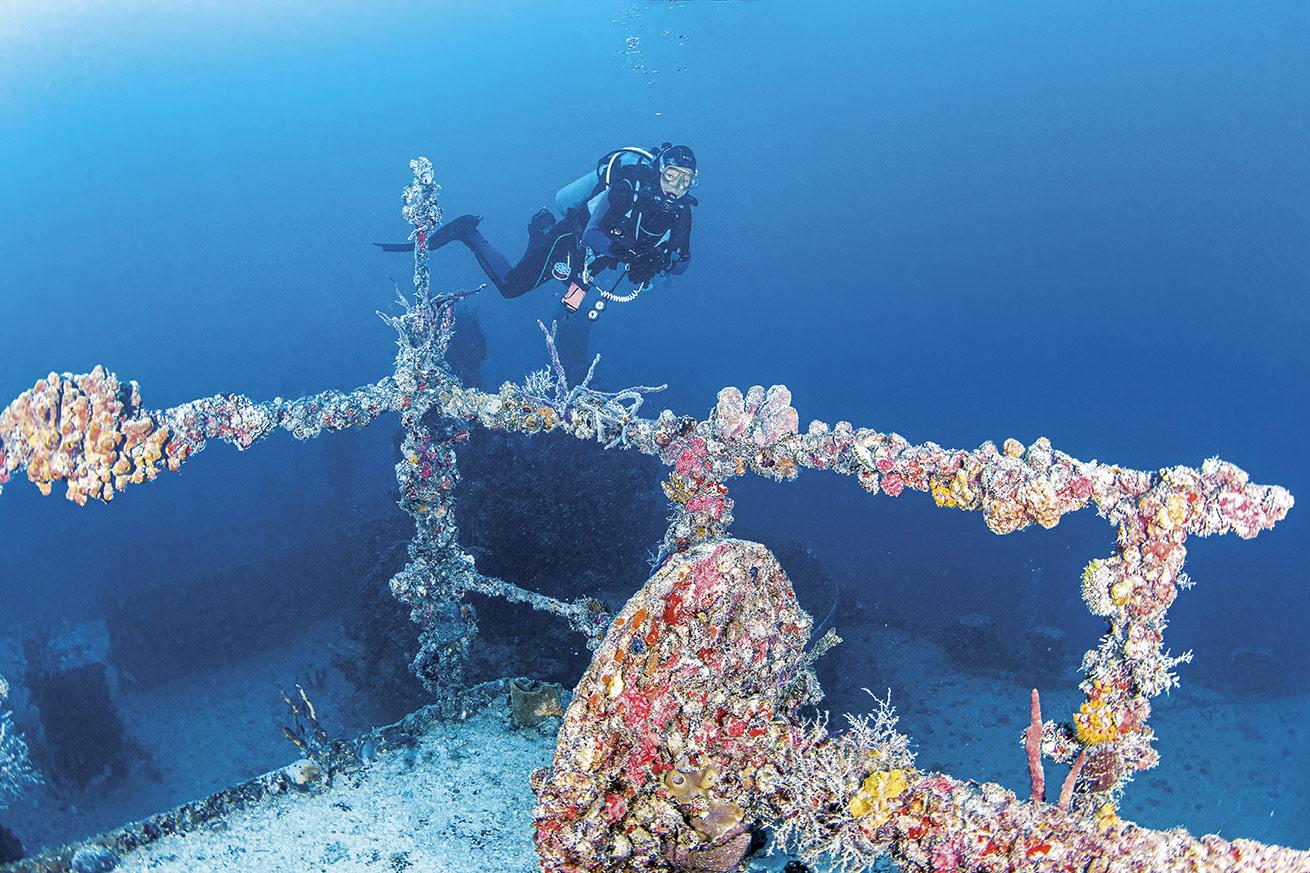
Lureen FerrettiCorals encrust nearly every inch of the massive Spiegel Grove wreck.
36. Florida Keys
Go Big Off Key Largo
For those who believe that a proper wreck takes a few, if not a half dozen, dives to properly explore, the USS Spiegel Grove awaits. This 510-foot retired Navy ship spent its years in service transporting troops around the world but is now home to sharks, grouper and barracuda. With the main deck at a depth of 100 feet and the bottom at 140 feet, advanced divers can spend plenty of time penetrating the wreck and all that it has to offer. —ANDY ZUNZ
Operator: Amoray Dive Resort (amoray.com)
Related Reading: Rescued Endangered Sawfish in Florida Keys Dies in Captivity
37. Cayman Islands
Take in the Splendor of Grand Cayman’s North Wall
Diving among Grand Cayman’s 40-plus dive sites might be worth it for the seascapes alone. The North Wall features plunging walls, towering pinnacles, canyons encrusted with corals, and swirling sandbars. Swim next to stingrays and starfish over the white sands of Stingray City, dive with hammerheads at Tarpon Alley, and glide alongside graceful eagle rays at Leslie’s Curl—the North Wall’s site selection seems endless. From deep drift dives to sites that are mellow and shallow, there’s something for every diver. —CHANTAE REDEN
Operator: Ocean Frontiers (oceanfrontiers.com)
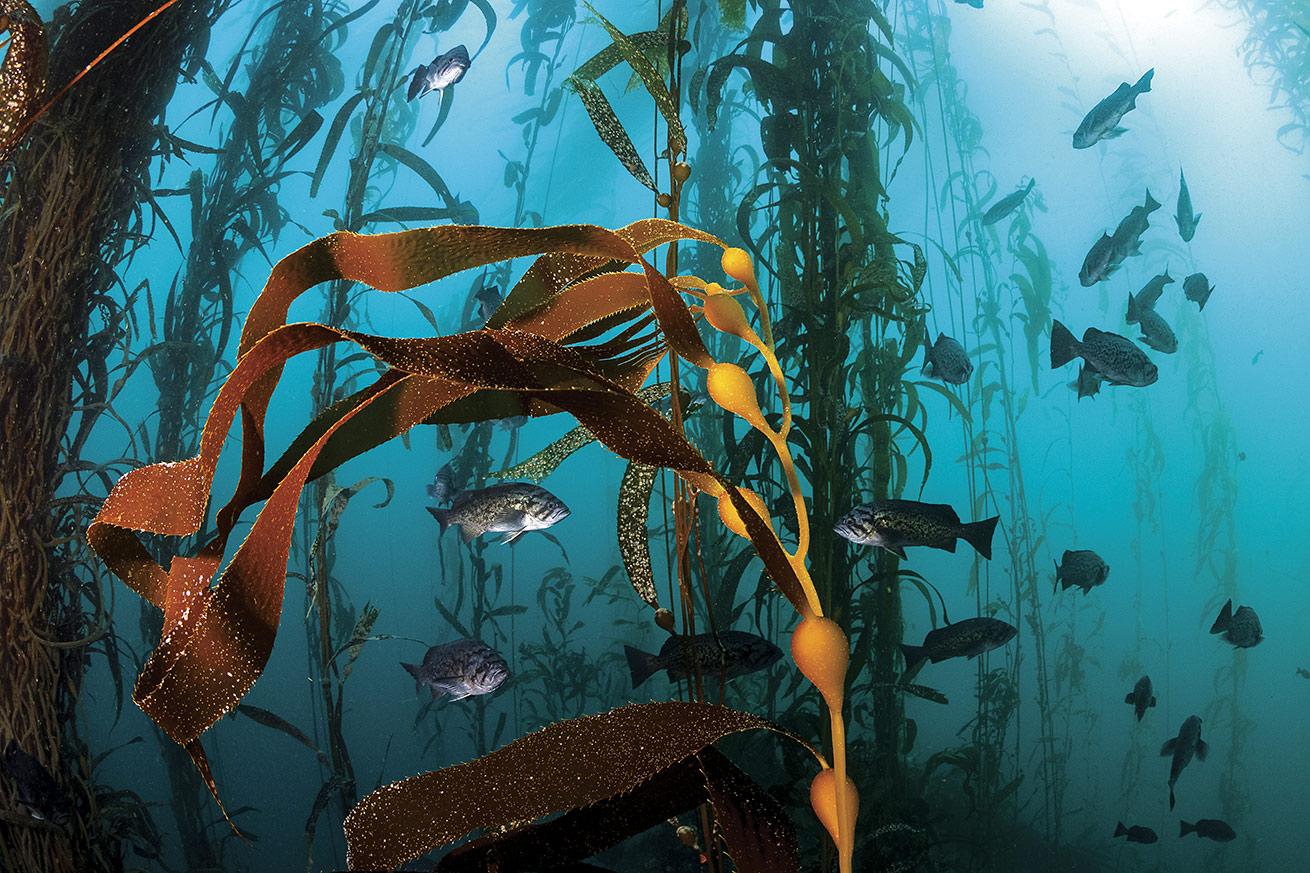
Brandon ColeGiant kelp in Monterey, California.
38. California
Kelp Forest Bathing in Monterey Bay
Forest bathing—immersing oneself in the sights, sounds and smells of nature—is a popular antidote to the stressors of everyday life. But for divers, the ultimate nature therapy lies beneath the waves. Towering kelp forests, reaching 80 feet or more, create a mesmerizing underwater cathedral. Sunlight filters through the amber lattice of blades, bathing the rocky reefs in magenta, green and pink hues. —ARIELLA SIMKE
Operator: Aquarius Dive Shop (aquariusdivers.com)

